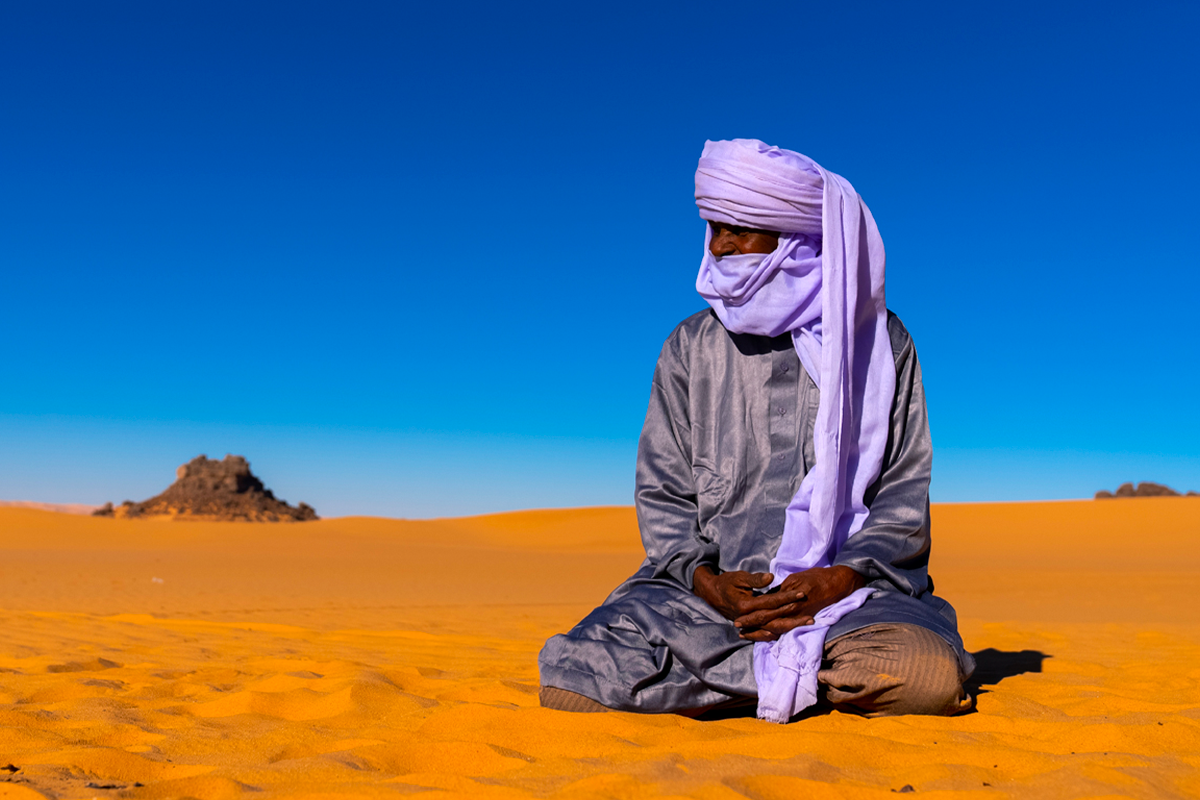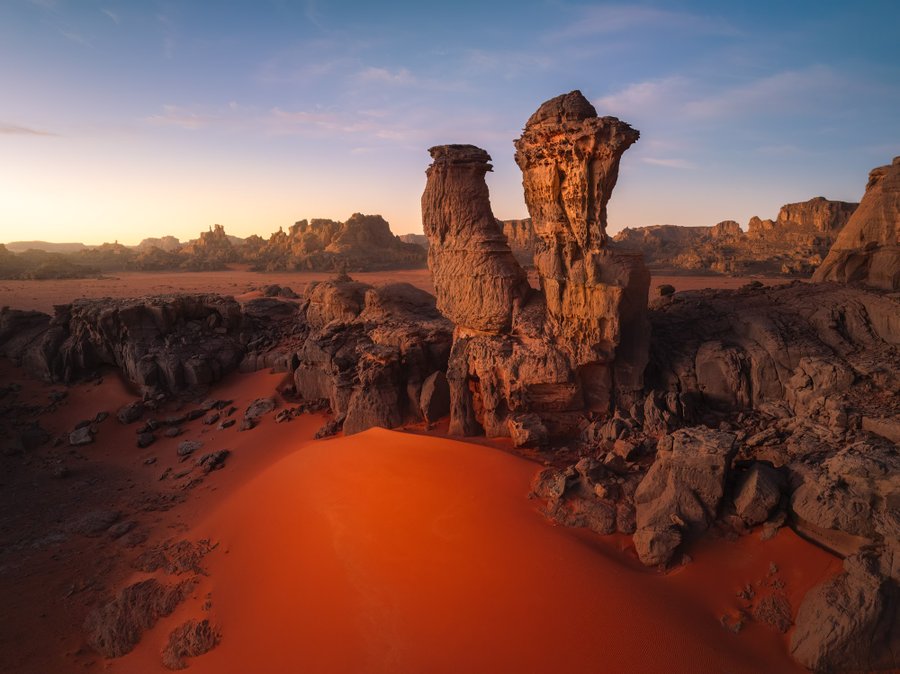✏️ BY: Dr. Hana Saada
Algiers, Algeria | June 9th, 2024 — Algeria, a nation steeped in history and brimming with diversity, beckons travelers from around the globe with promises of unforgettable experiences. From the majestic Sahara to the tranquil Mediterranean coast, Algeria’s allure is boundless, offering something for every traveler’s taste and preference.
Algeria’s tourism sector saw a notable rise in foreign arrivals, totaling 3.3 million visitors in 2023. With coastal provinces witnessing a surge in tourist numbers, Minister of Tourism and Handicrafts, Mokhtar Didouche, shed light on the country’s growing allure domestically and internationally. As Algeria’s tourism continues to flourish, Dzair Tube English introduces its tourism series, inviting the world to explore the country’s diverse attractions and cultural heritage. Join us as we embark on a journey to discover the beauty and history of Algeria firsthand.
Dzair Tube English: Your Gateway to Algeria’s Splendors
Dzair Tube English proudly presents two captivating series aimed at immersing you in the mesmerizing tapestry of Algeria’s wonders. In the first series, we unveil the hidden gems and tourist marvels that make Algeria a destination like no other. Join us as we explore the picturesque landscapes, cultural hotspots, and untold stories that showcase the diverse allure of Algeria. In the second series, we delve deep into the cultural treasures, heritage, and traditions that define the soul of this remarkable country. Our goal is to shed light on the rich tapestry of Algeria’s history and traditions, inviting you to embark on a fascinating journey with us. Come, be a part of this exploration, and discover the captivating allure of Algeria through Dzair Tube English.
Algeria Eases Visa Grant Procedures for Foreign Visitors
In a significant move to boost tourism, Algeria has streamlined its visa grant procedures for foreign visitors. The new measures aim to simplify and expedite the application process, making it more accessible and user-friendly. By reducing bureaucratic hurdles and shortening processing times, Algeria is opening its doors wider to tourists, business travelers, and cultural enthusiasts.
Moreover, initiatives, such as direct air routes connecting southern Algerian provinces with international destinations and affordable travel packages for local tourists underscore Algeria’s commitment to revitalizing its tourism industry.
Strengths of the Tourism Sector in Algeria
1- Strategic Geographical Location: Algeria boasts a strategic geographical location, close to traditional and potential markets, making it an accessible destination for international tourists.
2- Diverse and Rich Geography: Algeria features a stunning Mediterranean coastline over 1,200 kilometers long, diverse landscapes including plains, high plateaus, mountain ranges, and a vast desert covering 2 million square kilometers. This geographic diversity is rich in natural and historical elements, preserving the heritage of the southern region.
3- Attractive Natural and Cultural Heritage: Algeria’s natural and cultural heritage is a significant draw for tourists. The country enjoys a mild and pleasant climate year-round, offering a comfortable environment for visitors.
4- Political, Economic, and Security Stability: The country’s political, economic, and security stability provides a safe and conducive environment for tourism development.
5- Advanced Infrastructure: Algeria has developed advanced infrastructure, including air transport, facilitating easy access and comfortable travel within the country.
6- Government Incentives for Investment: The Algerian government has implemented a robust incentive system to encourage investment in the tourism sector.
Key Tourism Indicators in Algeria
– Accommodation: Algeria has 1,557 hotel establishments with a total capacity of 143,811 beds, including nearly 20,000 beds in the public sector, currently under renovation and modernization.
– Health Resorts: There are 26 operational health resorts and 32 ongoing thermal activity projects, with approximately 282 hot springs available.
– Travel Agencies: 4,496 accredited travel and tourism agencies (ATVs) and 200 national and local tourist guides.
– New Projects: 2,562 approved projects, including 791 under construction, expected to create 90,000 beds.
– Beaches: 609 beaches identified, with 427 authorized for swimming.
– Tourist Sites: 154 tourist sites and routes.
– National Parks: 10 national parks, including the Tassili National Park (100,000 hectares) and the Ahaggar Cultural Park (380,000 hectares). Additionally, 51 wetlands are classified under the Ramsar Convention.
Tourism and Hospitality Education
Algeria has a comprehensive training offer in tourism and hospitality:
– Institutions: 136 training institutions with 880 pedagogical chairs.
– Ministry Training Institutes: Three institutions under the Ministry of Tourism (ENST EL Aurassi, Tizi Ouzou, and Bousaada Institutes).
– Renowned School: ESHRA Ain-Benian, an internationally recognized school.
– Vocational Training: 92 institutions specialized in tourism and hospitality.
– Private Schools: 41 private schools in tourism and hospitality.
Supporting Sector Achievements
– Airports: 36 airports, including 16 international.
– Dams and Water Treatment: 80 dams and 20 seawater treatment plants, plus 15 large power generation stations.
– Road Network: Approximately 127,000 km of roads.
– Rail Network: 6,300 km of railways, including metro and tram networks in seven states.
– Telecommunications: A network covering most parts of the country.
Government Vision for Tourism Development
The Algerian government aims to promote tourism through a new policy focused on diversifying away from oil resources:
– Strategic Division of Tourism Demand: Identifying and promoting various types of tourism (summer, cultural, religious, desert, southern, mountain, and family tourism).
– Destination Algeria Plan: Implementing a plan that includes tourism excellence hubs, quality tourism plans, public-private partnerships, and new low-cost airline routes to major northern and southern cities.
– Tourism Training Development: Enhancing training in tourism professions to attract labor and reduce youth unemployment, promoting summer and seasonal jobs.
– Visa Facilitation: Implementing more flexible procedures for obtaining tourist visas.
Tourism Real Estate
Tourism real estate plays a crucial role in investment development, including 249 tourist expansion and site areas (ZEST) covering a total area of 57,872 hectares:
– Coastal Areas: 159 sites
– Desert Areas: 23 sites
– Thermal Areas: 28 sites
– Cultural and Historical Areas: 18 sites
– Climate and Leisure Tourism: 21 sites
Among these, 71 sites have approved tourism development plans, resulting in 1,322 plots, 75% of which are available for allocation, with a capacity of up to 150,000 beds. Another 96 sites are under review or awaiting approval, potentially creating approximately 1,800 additional real estate plots. (1)
Algeria’s comprehensive approach and strategic initiatives are set to position the country as a premier tourism destination, leveraging its natural beauty, rich heritage, and advanced infrastructure.
Explore Algeria: A Destination of Riches
Discover the beauty and richness of Algeria, where captivating landscapes and cultural treasures await. Thanks to the facilitation efforts of the Algerian government, visiting this North African gem has never been easier.
From the breathtaking Sahara Desert to the stunning Mediterranean coastline, Algeria offers diverse and picturesque landscapes that will leave you in awe. Explore the ancient ruins of Timgad and Djemila, both UNESCO World Heritage Sites, and delve into the fascinating history of the Roman Empire.
For nature enthusiasts, the majestic Hoggar Mountains and lush greenery of the Tell Atlas Mountains provide endless opportunities for hiking, trekking, and wildlife spotting. Don’t miss the chance to experience the unique beauty of the Tassili n’Ajjer National Park, renowned for its ancient rock art and stunning rock formations.
Algeria’s vibrant cities also offer a rich cultural experience. Wander through the bustling streets of Algiers, where French colonial architecture blends seamlessly with traditional Arab-Islamic designs. Explore the vibrant markets of Oran and sample delicious Algerian cuisine in Constantine.
With its warm hospitality, rich history, and breathtaking landscapes, Algeria invites foreign tourists to embark on a journey of discovery and adventure. Whether you’re seeking adventure in the desert, relaxation by the sea, or immersion in ancient history, Algeria has something for everyone. Come and experience the magic of Algeria for yourself.
Let’s explore these hidden treasures in depth
Sahara Tourism: Embrace the Mystique of the Desert
The Algerian Sahara, the second-largest desert in the world, spans nearly two million square kilometers, offering an extraordinary array of natural, cultural, and historical treasures. As Algeria’s flagship tourism product, Saharan tourism invites visitors to explore its five UNESCO-designated cultural parks:
– Tassili n’Ajjer in Illizi: Renowned for its prehistoric rock art, this park is a veritable open-air museum with over 15,000 engravings depicting ancient human and animal life.

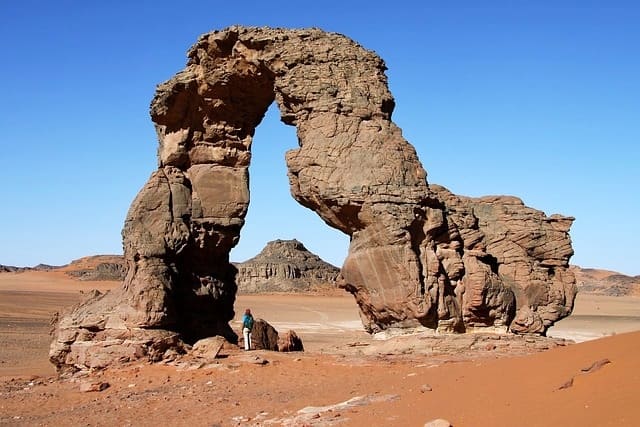
– Ahaggar in Tamanrasset: Home to the majestic Hoggar Mountains, this park offers stunning landscapes and is steeped in Tuareg culture.

– M’Zab Valley in Ghardaia: A UNESCO World Heritage site, this valley is famed for its unique architecture and well-preserved Berber traditions.

– Atlas Saharien Cultural Park: Spanning Touat-Gourara-Tidikelt, this park boasts diverse landscapes and significant archaeological sites.
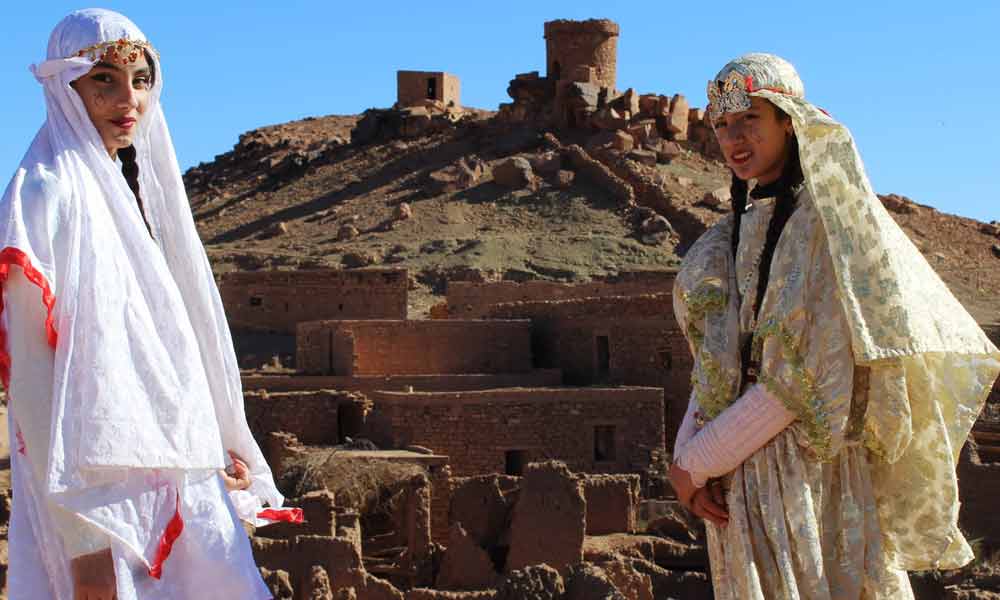
These parks, alongside other desert regions, provide unparalleled opportunities for trekking, camel riding, and cultural immersion in one of the most serene and awe-inspiring environments on earth.
Taghit: The Enchanted Oasis of the Algerian Sahara
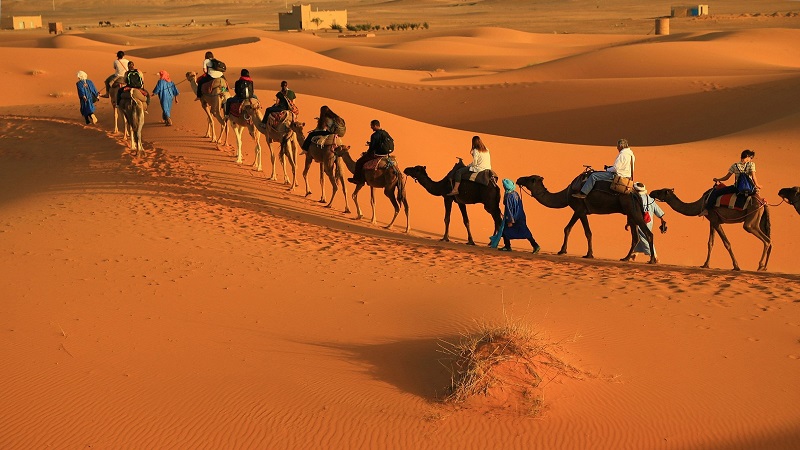
Known as the “enchantress,” Taghit has captivated generations of Algerians and tourists alike, drawing increasing numbers of visitors during universal New Year celebrations, spring, and autumn.
Taghit is hailed as the jewel of Saoura, a prominent region in southwestern Algeria, bordering Morocco, Western Sahara, and Mauritania. Alongside Timimoun and Djanet in the Tassili N’Ajjer, Taghit stands out as one of the most beautiful oases globally.
Taghit’s fame primarily stems from its stunning sunsets and sunrises. Spanning 93,000 hectares, this oasis boasts breathtaking natural landscapes that leave visitors in awe. The local population, including the Zayanes nomads, embodies a lifestyle steeped in tranquility, amidst a culturally rich backdrop dating back to the Neolithic era, as evidenced by ancient rock engravings scattered throughout Taghit.
The history of Taghit extends beyond its symbolic monuments, such as the ancient Ksar, estimated to be eight centuries old. A majestic dune offers a unique sand skiing experience and sand therapy. Visitors can also explore several water-draining galleries called “foggaras.”
The launch of iron mining at Gara Djebilet in 2022, located in the southwestern Algerian wilaya of Tindouf, has further attracted international tourists to Taghit.
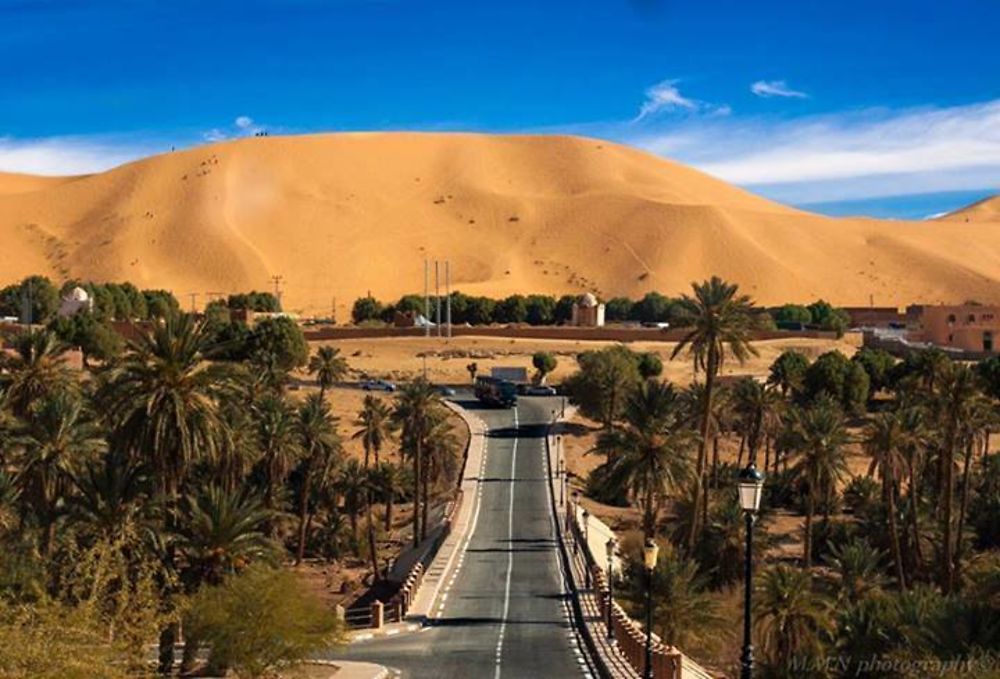
Nestled amidst a palm grove between the rocky Baroun massif and the dunes of the Grand Erg Occidental, Taghit offers accommodations ranging from a 4-star hotel (Saoura) to numerous eco-friendly cultural guesthouses and bivouacs.
Despite the recent creation of ten new wilayas (administrative districts) in Algeria, Taghit remains administratively part of the mother wilaya of Béchar, approximately 100 kilometers away.
In Taghit, human existence resonates with the enchanting rhythms of Diwan, a local musical genre. Popularized by the Lemma group, Diwan features distinctive instruments like the Guembri and Karkabou.
Diwan shares similarities with “Ahellil” from Gourara, another typical musical and poetic genre of southwestern Algeria. Recognized as part of UNESCO’s Intangible Cultural Heritage, Ahellil of Gourara is characterized by rhythmic hand clapping and harmonious chants that continue throughout the night until dawn, passed down through generations in Taghit.

Séfar: The Lost City of “Djinns” in the Algerian Desert

Located in the wilaya of Djanet, in the southern part of Algeria near the borders of Libya and Niger, Séfar is renowned as the largest troglodyte city in the world, designated a UNESCO World Heritage site since 1982. Its origins remain shrouded in mystery, adding to its allure.

The experience Séfar offers to tourists is unparalleled. Its caves and rocks adorned with red, black, and white cave paintings dating back 5,000 to 8,000 years BC narrate myriad stories and legends, creating an open-air museum of immense historical and cultural significance.
Inscribed on UNESCO’s World Heritage list in 1982, Séfar houses the world’s largest open-air museum of caves and rock art, with over 15,000 inscriptions, drawings, and engravings spanning multiple historical periods. Some of the oldest rock paintings date back at least 12,000 years BC, reflecting the diverse civilizations and cultures that once thrived in the region.

Paradise Surrounded by Myths and Legends

Despite its vast size, Séfar remains an arid and uninhabited area, making it a privileged environment for rare animal species such as mouflons, deer, snakes, and scorpions. Some researchers have even suggested the presence of crocodiles in the deep water basins surrounding the city.
One of Séfar’s extraordinary features is the abundance of myths and supernatural stories passed down by its inhabitants and their ancestors. According to some legends, Séfar was once a kingdom of “djinn,” invisible beings, before humanity inhabited the Earth. Other tales describe a coexistence between humans and djinns, illustrated by prehistoric depictions of humans accompanied by mysterious, unidentified creatures.


The “Oasis de Djanet” refers to the oasis town of Djanet, located in the southeastern part of Algeria. Djanet is renowned for its stunning natural beauty, cultural heritage, and historical significance.
Ghardaïa: Jewel of the Algerian Sahara Nestled in the Heart of the Great M’zab

Located 600 km south of Algiers, Ghardaïa is the capital of the M’zab Valley and covers an area of 86,105 km². It is bordered to the west by El Bayadh and Adrar, to the north by the wilayas of Djelfa and Laghouat, to the east by Ouargla, and to the south by Tamanrasset.
Ghardaïa is a UNESCO World Heritage site and is considered a major tourist destination in Algeria due to its architecture and history. The city is home to a significant Mozabite community.



(From: National Geographic – PHOTOGRAPH BY SIMON URWIN)
Discovering the City and Region
The Old Market: The ancient market is a testament to the civilization and culture of the region, distinguished by its marvelous architecture and design. Established in 1884 AD, it has historically been a destination for local and foreign trade caravans.

This market not only serves the residents of Ghardaïa but also attracts millions of visitors annually from various Algerian wilayas and abroad.
Traditional Carpets in Ghardaïa: One of Ghardaïa’s defining features is its craftsmanship in carpet weaving. These carpets are typically woven on a white surface and are adorned with special symbols that express the region’s social, cultural, and historical dimensions. The carpet industry holds a special place in the region, with approximately 20,000 women artisans working either from home or in cooperatives. During the weaving process, artisans highlight a range of symbols in different shapes and colors that reflect the authenticity of the zarbiya.

Hammam Zelfana: This hammam is one of Ghardaïa’s most famous monuments and a source of hot water. Thanks to its therapeutic properties, Hammam Zelfana offers therapeutic tourism, attracting visitors for skin ailments and leisure, along with comfortable accommodations.

Mausoleum: Located south of Kser al-Atteuf within the tomb of Sheikh Ibrahim Ibnou Manade, who lived in the second century, the mausoleum is oriented towards Mecca. Its architecture is considered a masterpiece of the region, drawing researchers and architects alike.

Culinary Delights and Cultural Significance
Ghardaïa is not just an oasis; it is also a culinary destination. The M’zab Valley is renowned for its delicious traditional dishes, served at family events. Visitors to M’zab shouldn’t miss the opportunity to savor the popular “Maghlouga,” a stuffed delicacy with meat, vegetables, and spices.
Ghardaïa: The City of 7 Ksours
The civilization of the M’zab Valley is reflected in its adherence to religion, originality, traditions, and unique architecture. Ghardaïa, known as the “city of seven ksours,” is a one-of-a-kind gem. Its geographical location, distinctive traditions, and rich history make it a premier tourist destination in the desert.

Ksar el Menia: Located 270 km south of Ghardaïa, this ancient ksar overlooks the entire oasis and city entrances of El Mania. Built on a pyramid-shaped mountain at a height of 75 m, Ksar el Menia was classified as a national heritage site in 1995.
Mausoleum of Sheikh Sidi Aissa: The cemetery of Sheikh Sidi Aissa and his family is located north of Kser Ate Mlichet (Mlika). The mausoleum is an open space used for funeral prayers and the annual “visits” season organized by the sheikhs each spring, where local historical events are recounted.


Traditional Sand Bath Therapy: A Centuries-Old Healing Ritual Boosting Saharan Tourism
The ancient practice of psammotherapy, also known as sand therapy or sand bathing, is gaining prominence in southern Algeria, particularly in the provinces of In Salah and Béchar. This traditional therapeutic method, deeply rooted in local culture, is not only recognized for its curative benefits but is also emerging as a potential catalyst for promoting Saharan tourism.
Sands of Healing: The Intricate Process of Psammotherapy
Psammotherapy involves burying individuals in the hot desert sand for a specific duration, offering an alternative medicine experience. The sands of In Salah, renowned for their therapeutic properties, are drawing an increasing number of visitors seeking natural remedies for various ailments.
This centuries-old practice has become a notable attraction, especially in In Salah, where the local tourism industry experiences a surge in spa enthusiasts each year. The rise of desert camps introducing sand bathing to tourists has expanded the reach of this traditional therapy, attracting wellness-seeking travelers eager to harness the healing power of the desert.
The sand bathing process involves digging a shallow hole in the scorching sand, allowing it to absorb the desert heat. After preparation, guests recline in the hole, covered up to the neck with sand, inducing profuse sweating. The treatment, lasting no less than two hours, is followed by a rest period in a tent, allowing the body to absorb the therapeutic benefits fully.

In detail, the shallow depression is created in the warm sand, taking into consideration the individual’s size, approximately 20 centimeters deep. Afterward, the pit is left exposed for around 30 minutes to allow the intense desert heat to permeate the sand. Once suitably heated, individuals recline facing upwards in the depression and are enveloped up to their necks in the sand. Encased in the warmth of the sand, the body initiates a profuse sweating process. It is customary to place a moist cloth on the client’s head or provide a parasol to shield them from the sun. Sand baths are typically scheduled during the peak heat hours of the day.

The participants stay buried for a minimum of 07 minutes to up to two hours, after which they proceed to a tent. There, they are comfortably wrapped in a blanket for approximately 45 minutes, allowing a mixture of sweat and residual sand to form a mud-like layer on the skin. The session concludes when the mud is rinsed off.
Throughout the process, guests require supervision and continuous monitoring. Attendants ensure umbrellas are positioned on the sand to shield participants from the sun. They also assist in providing water to prevent dehydration during the treatment. Additionally, a customary safety practice is to place less sand over the heart.

Unveiling the Therapeutic Wonders: Medical Benefits of Ancient Sand Therapy in Southern Algeria
Sand hammams are believed to offer various health benefits, including the alleviation of back pain, stress relief, improved blood circulation, and the treatment of conditions such as obesity, dermatological diseases, rheumatism, arthritis, sciatica, and osteoarthritis. These practices involve immersing oneself in hot sand during the summer when temperatures are high, particularly beneficial for those in urban areas with humid climates.
The high temperatures of the sand, ranging from 70 to 80°C, help absorb excess moisture, especially in the bones, providing relief for joint pains, particularly rheumatism. Sweating during this process aids in detoxification, while the sand’s exfoliating properties benefit dry skin. The weight of the sand contributes to muscle relaxation and mental tranquility. Additionally, the mineral composition of the sand is utilized to address skin conditions like acne and psoriasis, among other medical ailments.
Besides, the success of sand therapy lies in its ability to stimulate the patient’s immune system, attributed to the presence of certain radioactive elements in the sands. Desert sands not only aid in physical healing but also contribute to mental tranquility and spiritual clarity. Those seeking relief from anxiety and psychological stress are advised to indulge in hot sand baths, leaving them with a refreshed mind and spirit.
Mr. Snoussi Ahmed from the city of Bordj Bou Arréridj, a patient who frequents the region of Adrar for sand therapy, attests to the significant improvement in his health over the past four years. Suffering from rheumatism for two decades, Mr. Ahmed emphasizes that many patients, himself included, travel to Adrar specifically for its unique and highly effective sand quality.
Hajj Abdelrahman from the High Plateaus, accompanied by his friend Mr. Menour, has been following this therapeutic approach for nearly seven years. He highlights the considerable relief they’ve experienced, alleviating the persistent pains associated with their conditions. The choice of Adrar, according to him, is due to the superior quality of the sands in the western region, enhancing the efficacy of the treatment.
During the treatment, patients are advised to adhere to specific guidelines, such as avoiding direct exposure to air currents, staying away from air-conditioned environments, minimizing the consumption of fatty foods, and refraining from eating at least an hour before and after sand immersion. Regular walks are also encouraged as part of the therapeutic routine.
Interestingly, Europeans, particularly Germans, Russians, English, French, and Poles, show significant interest in this form of therapy, underscoring the global appeal of natural healing through sand immersion.
Beyond Healing: The Communicative Benefits of Sand Hammams for Tourists and Local Traditions
While sand hammams are believed to alleviate various conditions, they also serve as a unique experience for tourists looking to engage with local traditions. Visitors are closely monitored during the treatment, ensuring their well-being as they immerse themselves in this age-old therapeutic practice.
Hadj Mebarek Aribi, an expert in medicinal herbs and sand baths from the Baraka region, emphasizes the diverse therapeutic virtues of sand therapy. He notes that the treatment accelerates recovery for accident victims and post-surgery patients, providing relief from pain and absorbing residual shocks in the bones.
Medical practitioners, including Dr. Bermaki Mustapha, acknowledge the positive energies found in the clay particles of the sand, contributing to the removal of negative energies from the body. However, caution is advised for individuals with chronic diseases, emphasizing the importance of seeking medical advice before undergoing this heat-intensive therapy.
Beyond its health benefits, sand bathing becomes a social ritual in local communities, fostering familial connections and serving as a space for cultural traditions. Haja Habeitat Aisha highlights the role of sand baths in social relations, marriage arrangements, and other communal activities.
Hamida bin Al-Zayer, Director of Tourism and Handicrafts in In Salah, underscores the tourism potential of sand baths. He notes that, in addition to its undeniable health advantages, this traditional practice adds value to the region’s tourism appeal, drawing both domestic and international tourists with its golden sands, palm oases, and captivating landscapes. As psammotherapy gains recognition, it stands poised to contribute to the multifaceted allure of Saharan tourism in Algeria.
Traditional Sand Baths in Taghit: A Healing Legacy Passed Down the Generations

For many years, Taghit, the southwestern gem of Algeria, has been a sought-after destination, especially for those aware of the health benefits of hot sand baths during the summer. The golden sand dunes transform into a hub of activity, attracting individuals, particularly those suffering from rheumatism, seeking relief through the traditional practice of sand immersion.
Local experts, experienced in the art of sand immersion and the use of indigenous herbal remedies, continue to offer their services during the summer months. Families set up tents to accommodate visitors from across the country, creating a communal space for the treatment of ailments, particularly rheumatism, which many find challenging to address through modern medicine.
Elders in Taghit attest to the effectiveness of this traditional sand bath therapy, referring to significant relief and rejuvenation from rheumatism. The practice, deeply rooted in the local culture, contributes to the region’s identity as a renowned destination for medical tourism, blending its historical and cultural heritage with therapeutic traditions.


(From: National Geographic – PHOTOGRAPH BY SIMON URWIN)
Coastal Tourism: Sun, Sand, and History on the Mediterranean
Algeria’s 1,200-kilometer Mediterranean coastline is a haven for beach lovers, hikers, and water sports enthusiasts. The pristine beaches are perfect for sunbathing, swimming, and fishing, while the coastal waters are ideal for diving and sailing.

Moreover, Algeria’s coastal regions are steeped in history, with numerous archaeological sites from the Phoenician, Roman, and Ottoman eras dotting the shoreline. Visitors can explore ancient ruins, such as those in Tipaza, a UNESCO World Heritage site, which offers a fascinating glimpse into the past with its well-preserved Roman ruins and captivating sea views.
Algeria’s Most Popular Beaches
The most sought-after beaches in Algeria are located in Oran, Bejaia, Marsa Ben M’Hidi, and Algiers. These destinations attract numerous vacationers each summer in search of sun-soaked relaxation. Madagh Beach in Oran is undoubtedly the most renowned, boasting white sand, crystalline waters, and lush surroundings, offering a paradisiacal setting.
The beaches of Bejaia, such as Sahel Beach, are also highly popular for their spectacular landscapes. They offer all amenities and a festive atmosphere during the peak season.
The small beach of Marsa Ben M’Hidi charms visitors with its peaceful ambiance, marina, and fishing boats. It is delightful to stroll along the promenade while enjoying seafood specialties.
Lastly, the beaches of Zeralda, near Algiers, such as Blue Beach, are reliable choices. They are easily accessible to the capital’s residents while offering a preserved setting in small sheltered coves.
Madagh: Oran’s Pearl
The magnificent Madagh Beach is undoubtedly the most beautiful in Oran. Located west of the city, it offers a fairy-tale panorama with its pristine sand and intense turquoise waters, all framed by verdant cliffs.
The atmosphere is lively and vibrant in summer, with numerous tents offering refreshments. Visitors can rent sun loungers to comfortably soak up the sun. It is also a favorite spot for surfers thanks to its regular waves.
At low tide, it is possible to walk on rocks covered with colorful shells. As the beach empties towards the end of the day, visitors can admire spectacular sunsets from the cliff tops. A true little paradise!
Golden Sands and Turquoise Waters in Bejaia
Bejaia, the magnificent, possesses beaches of breathtaking beauty. The most emblematic is certainly Sahel Beach, with its intense turquoise waters earning it the nickname “Algerian Riviera.”
Visitors are immediately charmed by this vast straight bay lined with fine sand. The atmosphere is very lively during the season with many activities such as beach volleyball or kite flying. The sunsets viewed from the restaurant terraces are spectacular.
A little further south lies the charming Aiguades Beach nestled in a small cove. Bordered by ochre rocks, its calm and translucent waters make it a little piece of preserved paradise for family swimming.
Lastly, the wild Tighremt Beach to the north will appeal to nature lovers. One can observe a rich marine fauna and flora around the rocks and caves accessible at low tide.
Tranquility at Marsa Ben M’Hidi
Marsa Ben M’Hidi, a small fishing village nestled on the Algerian west coast, exudes authentic charm with its blue and yellow boats aligned on the beach. It offers an idyllic panorama of the bay and the marina sheltered by a peninsula.
With its pristine sand and shallow calm waters, it is an ideal swimming spot for families. The atmosphere is relaxed, far from the hustle and bustle of large resorts.
For a moment of absolute tranquility, head to the small cove of Moscada Beach, nestled among the rocks. Visitors can comfortably settle on the pebbles with a view of an uninhabited islet.
Zeralda: A Haven near Algiers
For a beach getaway just a few kilometers from Algiers, head to the beaches of Zeralda! The small resort is renowned for its sandy coves and turquoise waters, set in a preserved environment of pines and prickly pear trees.
Blue Beach is certainly the most popular, with its lagoon with azure reflections protected from the wind. The atmosphere is family-friendly and joyful. Many activities are offered, such as pedal boating or beach volleyball.
For more tranquility, opt for the lovely sandy beach offering a breathtaking panorama of the bay. It is the perfect place for a relaxing swim, followed by a picnic by the water while admiring the sunset.
The Uniqueness of Ziama’s Red Beach
Among Algeria’s most unusual beaches is the magnificent Red Beach of Ziama Mansouriah. Located in the east of the country, its uniqueness lies in its intensely red sand contrasting with the deep blue of the sea.
This surreal landscape, changing with the tides, has earned the beach the nickname “Coral Coast.” The place is quite wild, with its high rocky seabeds dotted with multicolored corals.
The atmosphere is peaceful, conducive to reverie. A stroll on the rocks allows visitors to observe fascinating marine fauna and flora. Swimming is not recommended, but the beauty of the site alone is worth the detour!
Tichy and its Multifaceted Beaches
The small village of Tichy, located north of Bejaia, offers 4 beaches with varied atmospheres over just a few kilometers. There is the large family beach in the city center, lined with restaurants, very lively in summer.
A little further away, the wild Rochers Beach charms with its rocky landscapes battered by the waves. It is a favorite spot for amateur fishermen as well as sunset lovers.
Between the two, the peaceful Hammadites Beach with its blond sand is ideal for a relaxing swim. Many amenities such as showers are available. Finally, the Stade Beach offers a good compromise between relaxation and animation for the whole family.
Confidential and Preserved Sites
In addition to renowned seaside resorts, Algeria has many small confidential coves where it is pleasant to relax. The coast is dotted with these little-known paradises, such as Aghzr Eddefel Beach west of Annaba.
This strip of blond sand enclosed between two rocky capes offers breathtaking scenery. It can be accessed after a 20-minute walk along a dizzying path. Those seeking tranquility gather here for timeless moments, lulled by the lapping of the waves.
Another unknown site is the sublime Tala Guilef Beach east of Jijel. Inaccessible by road, it is reached after a 3-hour hike through the surrounding forest. The reward is worth the effort: a beach of white sand bordered by a lagoon with crystalline waters, all surrounded by verdant cliffs. A true secret jealously guarded!
Activities and Leisure on Algerian Beaches
Algerian beaches offer numerous activities for all tastes. On lively beaches, there are all kinds of water sports such as jet skiing, wakeboarding, or tubing for thrills.
Along the coast, superb surfing spots have been developed for riders, with different levels of difficulty. Along the rocky coasts, scuba diving allows you to observe colorful marine fauna and flora.





Ghazaouet
Ghazaouet, officially known as “Djemaa el Ghazaouet,” is one of Algeria’s oldest fishing ports. Located 75 km from Tlemcen, the city is renowned for its sardines and anchovies. It also houses the remnants of old Berber forts.
Founded in 1845 by Marshal Bugeaud, Ghazaouet, formerly known as Nemours, derives its current name from the Arabic term meaning “conquest.” The town is nestled amidst slopes adorned with pine and cypress trees. Its beach is watched over by the “Two Brothers,” two rocks emerging from the water that symbolized the city during Roman times when it was known as Ad Fratres.

Skikda: Algeria’s Coastal Paradise
Skikda, a sprawling coastal wilaya in northeastern Algeria, is bordered by Annaba to the east and Jijel to the west. This historically rich city boasts scenic sites and paradisiacal spots that are ideal for vacationers. It’s no wonder that Skikda attracts a significant number of tourists from across the country.
5 Unmissable Places in Skikda
The rise of social media has significantly contributed to promoting Skikda’s beauty, showcasing its stunning beaches and other hidden treasures to a wider audience.
1. Oued Bibi Beach: Located in the Tamalous commune of Skikda, Plage Oued Bibi is a vast beach with golden sands. Recently accessible via a paved road, this family-friendly beach stands out for its inviting turquoise waters, tranquility, and safety.

2. Sofia – Guerbes Beach: Famous for the shipwreck bearing the same name, Plage Sofia is situated in the Flifla commune, east of Skikda wilaya. It’s an adventurer’s delight and a photographer’s paradise. To fully enjoy the experience, visit on weekdays or during off-peak seasons like September to avoid crowds.
3. Marsa Zitoun: Located along the coast of Kheneg Mayom in Skikda wilaya, Marsa Zitoun boasts clear blue waters, soft sands, and scenic views with dark rocks and lush green cliffs. Ideal for families, the shallow waters are safe for children, and the beach is lined with small restaurants offering local cuisine.

4. Marina d’Or Skikda: A sprawling aquatic complex located in Flifla, Marina d’Or is perfect for those who prefer swimming without the sand. The facility offers all amenities for a delightful day out, with an entry fee of 3800 DA.

5. Plage Khraief: Located halfway between Marsa Zitoun and Oued Zhor, Plage Khraief is a secluded spot accessible via a 2 km walk from Laouinat village along an unpaved track. This wild beach features a long reef divided by a large rock, offering visitors a serene escape amidst nature and the Mediterranean waters.

Cultural Tourism: A Journey Through Time
Algeria is a land rich in cultural heritage, boasting seven UNESCO World Heritage sites that reflect its storied past:
– La Kalaa “Citadel” of Beni Hammad (1980): The ruins of the first capital of the Hammadid dynasty, showcasing Islamic art and architecture.

The Kalâa of Béni Hammad is a remarkable archaeological site located 36 km northeast of the city of M’Sila in Algeria. Situated at an altitude of 1,000 meters amid stunning mountain scenery on the southern slope of Djebel Maâdid, this complex of preserved ruins dates back to the early 11th century. Founded by Hammad, the son of Bouloughine (the founder of Algiers), the Kalâa des Béni Hammad served as the first capital of the Hammadid emirs before being abandoned in 1090 due to the threat of Hilalian invasion. It stands as one of the most interesting and precisely dated monumental complexes of Islamic civilization, showcasing the grandeur and sophistication of the Hammadid dynasty.
Within its partially dismantled 7 km fortified enclosure, the Kalâa des Béni Hammad boasts numerous monumental remnants, including the grand mosque and its minaret, as well as a series of palaces. The mosque, with its 13-naved prayer hall spanning 8 bays, is the second largest after that of Mansourah, while its minaret is the oldest in Algeria after that of Sidi Boumerouane. These ruins bear witness to the refinement of Hammadid civilization, featuring original architecture and reflecting the palatial culture of North Africa.
The Kalâa des Béni Hammad provides exceptional testimony to the now-extinct Hammadid civilization. Established in 1007 as a military stronghold, it later evolved into a metropolis, influencing the development of Arab architecture and other civilizing centers such as the Maghreb, Andalusia, and Sicily. The archaeological and monumental remains of the Kalâa des Béni Hammad, including the grand mosque and its minaret, along with a series of palaces, are key resources that attest to the wealth and influence of the Hammadid civilization.
– The M’Zab Valley (1982): A cluster of fortified cities, epitomizing traditional Mozabite architecture and community life.

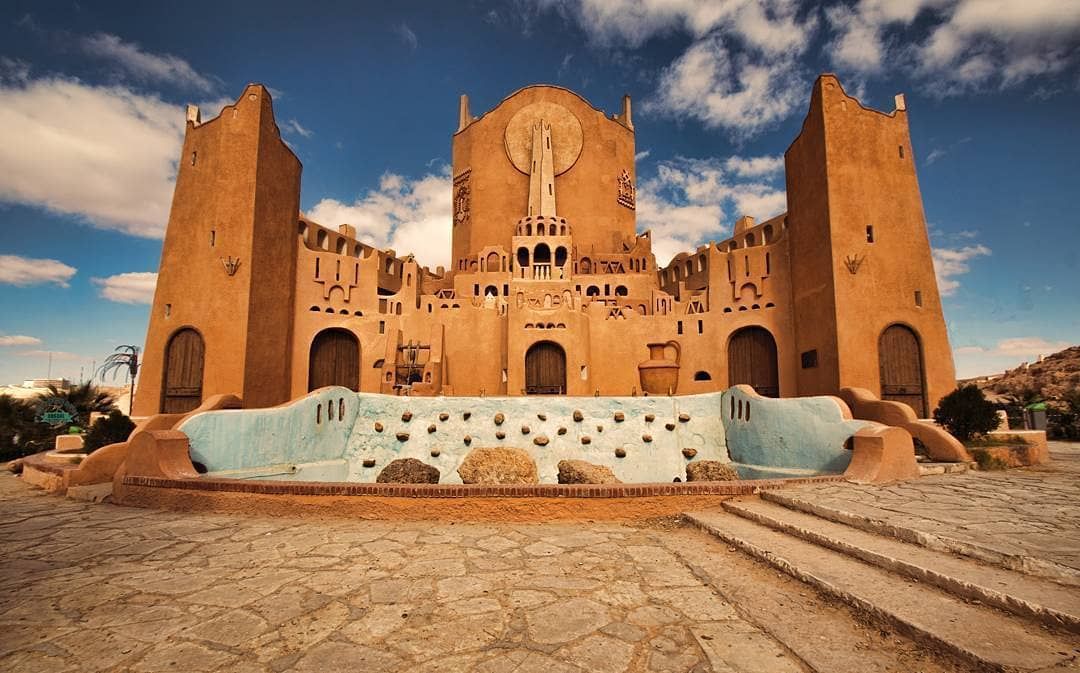

The M’Zab Valley, situated in the heart of the Sahara Desert, encompasses five fortified villages known as ksour, which have preserved their traditional human habitat since the 10th century. These villages, including El-Atteuf, Bounoura, Melika, Ghardaïa, and Beni-Isguen, represent a unique urban and cultural heritage marked by simplicity, functionality, and adaptation to the environment. The architecture of M’Zab, characterized by its compact cubic houses arranged around a central mosque, serves as a model for communal living while respecting family structure, inspiring contemporary urban planners.
Designated as a UNESCO World Heritage site, the M’Zab Valley’s anthropic ensembles showcase an exceptional example of early 11th-century architecture, reflecting a distinctive settlement model for the central Sahara cultural area. This model has exerted significant influence on Arab architecture and urban planning for nearly a millennium, inspiring renowned architects like Le Corbusier, Fernand Pouillon, and André Raverau.
Furthermore, the urban ensembles and settlements of the M’Zab Valley, comprising ksar, cemetery, and palm grove with its summer citadel, serve as a testament to the flourishing Ibadis culture and its egalitarian principles. Through innovative water capture and distribution systems and the cultivation of palm groves, the M’Zab Valley demonstrates the remarkable human adaptation to the semi-desert environment, making it a remarkable example of traditional human settlement.
– Djémila (1982): One of the best-preserved Roman cities in North Africa, with stunning ruins set against mountainous backdrops.

Djémila, also known as Cuicul, stands as an exceptional example of Roman urbanism adapted to a mountainous site, boasting forums, temples, basilicas, triumphal arches, and houses at an altitude of 900 meters. Located 50 kilometers northeast of the city of Sétif, Djémila, or Cuicul, was established as an ancient Roman colony during the reign of Nerva (96-98 AD). This Roman city, built on a remarkable defensive site, showcases exemplary Roman architecture in North Africa. Cuicul seamlessly integrated into the mountainous terrain, nestled between the Guergour and Betame torrents, maintaining its own senate and forum.
Djémila flourished in the early 3rd century with the construction of notable landmarks, such as the Temple of Septimius Severus, the Arch of Caracalla, the market, and the civic basilica. Additionally, Djémila bears a Christian imprint evident in several religious structures, including a cathedral, a church, and a baptistery, among the largest of the early Christian period. The site boasts a remarkable collection of mosaic pavements depicting mythological narratives and scenes from daily life.
Designated as a UNESCO World Heritage site, Djémila bears exceptional testimony to a vanished civilization, representing one of the world’s most beautiful sets of Roman ruins. The archaeological remains, the well-integrated Roman urban plan, and the surrounding environmental setting are key resources that embody the site’s attributed values. Djémila also serves as a prominent example of architectural ensembles illustrating a significant period in North African Roman history, from the 2nd to the 6th century. The classic pattern of Roman urbanism adapted to the site’s geomorphological constraints, featuring diverse typological and architectural elements, defensive systems, triumphal arches, public buildings, and commercial facilities.
– Timgad (1982): Known as the “Pompeii of Africa,” this Roman city is an architectural marvel with its well-preserved streets and buildings.

Located on the northern slopes of the Aurès Mountains, Timgad was founded ex nihilo in 100 AD by Emperor Trajan as a military colony. With its square enclosure and orthogonal plan dictated by the cardo and decumanus, the two perpendicular streets that traversed the city, it stands as a perfect example of Roman urban planning.
Situated in a mountainous site of remarkable beauty, north of the Aurès massif, 480 kilometers southeast of Algiers, and 110 kilometers south of Constantine, Timgad exemplifies a fully developed Roman military colony created ex nihilo. The Colonia Marciana Traiana Thamugadi was established in 100 AD by Trajan, possibly to serve as a camp for the 3rd Augustan Legion, later stationed at Lambaesis. The rigorously planned layout illustrates the pinnacle of Roman urbanism. The city’s rapid growth led to its expansion beyond the original walls, with major public buildings constructed in the new quarters: capitol, temples, markets, and baths, most dating from the Severan period, when the city experienced its golden age, evidenced by immense private residences.
As a strong and prosperous colony, Timgad aimed to showcase Roman grandeur in Numidian territory. The stone-built structures were frequently restored throughout the empire: Trajan’s Arch in the mid-2nd century, the east gate in 146, and the west gate under Marcus Aurelius. Streets were paved with large rectangular limestone slabs, and great attention was paid to civic amenities, as evidenced by the 14 baths identified to date. The houses, varying in size, were adorned with sumptuous mosaic decorations to compensate for the lack of precious marbles. In Christian times, Timgad was the seat of a famous bishopric. After the Vandal invasion of 430, Timgad was destroyed at the end of the 5th century by the Aurès mountain dwellers. Byzantine reconquest brought some activity back to the city, defended by a fortress built in 539 to the south, using blocks taken from Roman monuments. The Arab invasion ultimately ruined Thamugadi, which ceased to be inhabited by the 8th century.
Timgad, with its Roman military camp regime, planned urban model, and unique civilian and military architecture, reflects a profound exchange of ideas, technologies, and traditions exercised by the central power of Rome in the colonization of the high plains of ancient Algeria.
Timgad embodies the principles of planned urbanism from the Roman period, governed by a remarkable grid-based orthogonal plan. It represents a typical case of urban model, where the persistence of the initial castrum military plan regulated the site’s development through all subsequent epochs, continuing to testify to the engineering genius of the Roman civilization now lost.
Timgad contains a rich architectural repertoire formed of numerous and diversified typologies, relating to the different historical phases of its construction: the defensive system, public edifices, and entertainment venues, as well as an episcopal complex. Timgad provides a vivid portrayal of Roman colonization in North Africa, lasting three centuries.
– Tipaza (1982): Featuring a blend of Phoenician, Roman, early Christian, and Byzantine ruins.
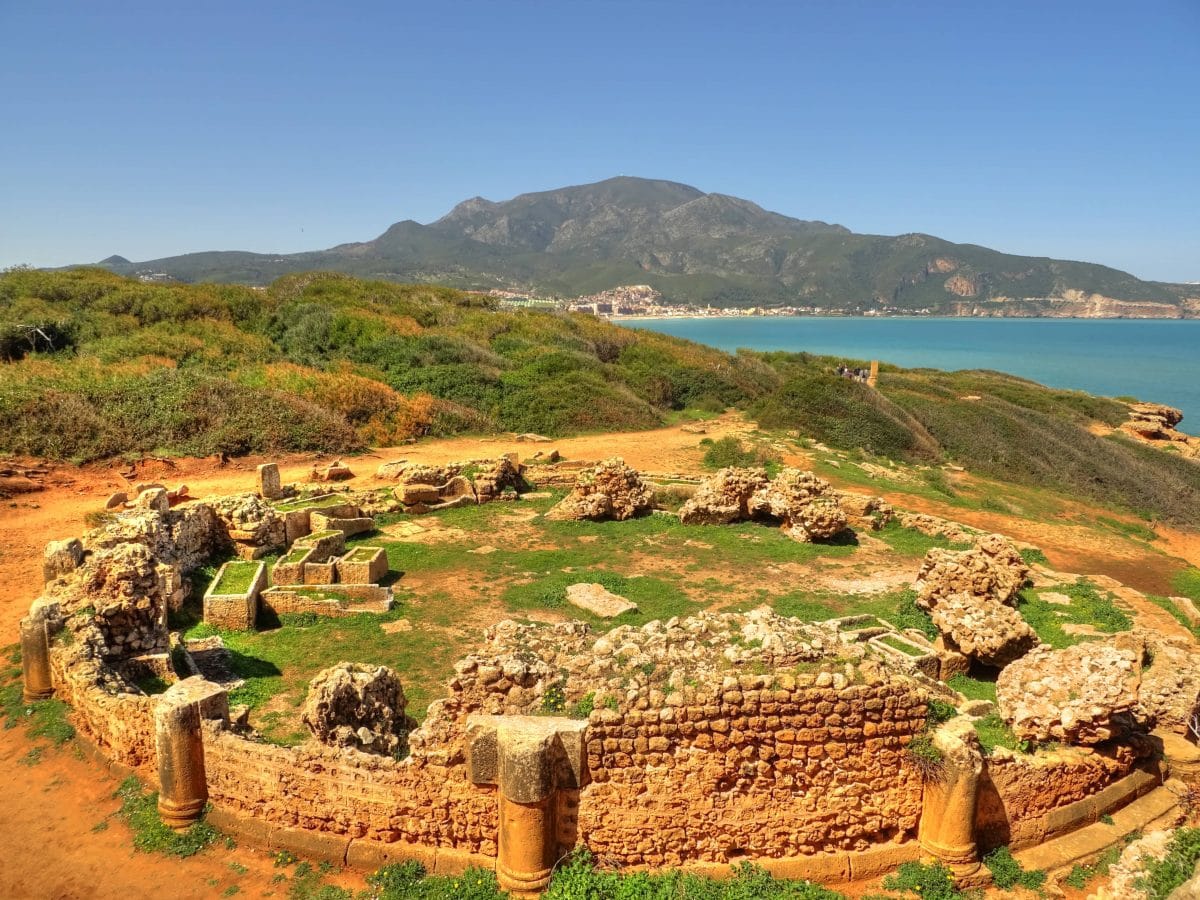
Located on the shores of the Mediterranean, Tipasa, an ancient Phoenician trading post, was occupied by Rome, which turned it into a strategic base for the conquest of the Mauritanian kingdoms. It encompasses a unique collection of Phoenician, Roman, Paleochristian, and Byzantine remains, alongside indigenous monuments like the Kbor er Roumia, the grand royal mausoleum of Mauretania.
Tipasa is situated 70 kilometers west of Algiers. It is a serial property consisting of three sites: two archaeological parks located near the current urban agglomeration, and the Royal Mausoleum of Mauretania, located on the plateau of the western Sahel of Algiers, 11 kilometers southeast of Tipasa.
The archaeological site of Tipasa is home to one of the most extraordinary archaeological complexes in the Maghreb and may be the most significant for studying the interactions between indigenous civilizations and the various waves of colonization from the 6th century BCE to the 6th century CE. This coastal city was initially a Carthaginian trading post, with its necropolis being one of the oldest and largest in the Punic world (6th to 2nd century BCE). During this period, Tipasa served as a maritime stopover and a hub for commercial exchanges with indigenous populations. Numerous necropolises reflect varied burial practices and funeral customs, demonstrating multicultural influences dating back to protohistoric times. The monumental circular funerary structure known as the Royal Mausoleum of Mauretania combines a local architectural tradition of the basin type with a conical stepped covering, reflecting various influences, including Hellenistic and Pharaonic.
The Roman period is characterized by a prestigious ensemble of buildings, consisting of highly diversified architectural typologies. From the 3rd to the 4th century CE, there was a remarkable Christian religious revival expressed through the multitude of religious buildings. Some are adorned with finely crafted mosaic pavements depicting daily scenes or geometric patterns. The Vandal invasion of the 430s did not definitively end Tipasa’s prosperity, but the city, reconquered by the Byzantines in 531, began to decline in the 6th century.
The architectural and archaeological remains of the Tipasa sites illustrate construction methods and architectural traditions specific to ancient Maghreb. Integrated into their natural environment, these sites exhibit a morphological, urbanistic, and architectural singularity that sets them apart from other ancient Mediterranean sites, making them a unique example. Tipasa significantly reflects the interactions between indigenous civilizations and the waves of Punic and Roman colonization between the 6th century BCE and the 6th century CE.
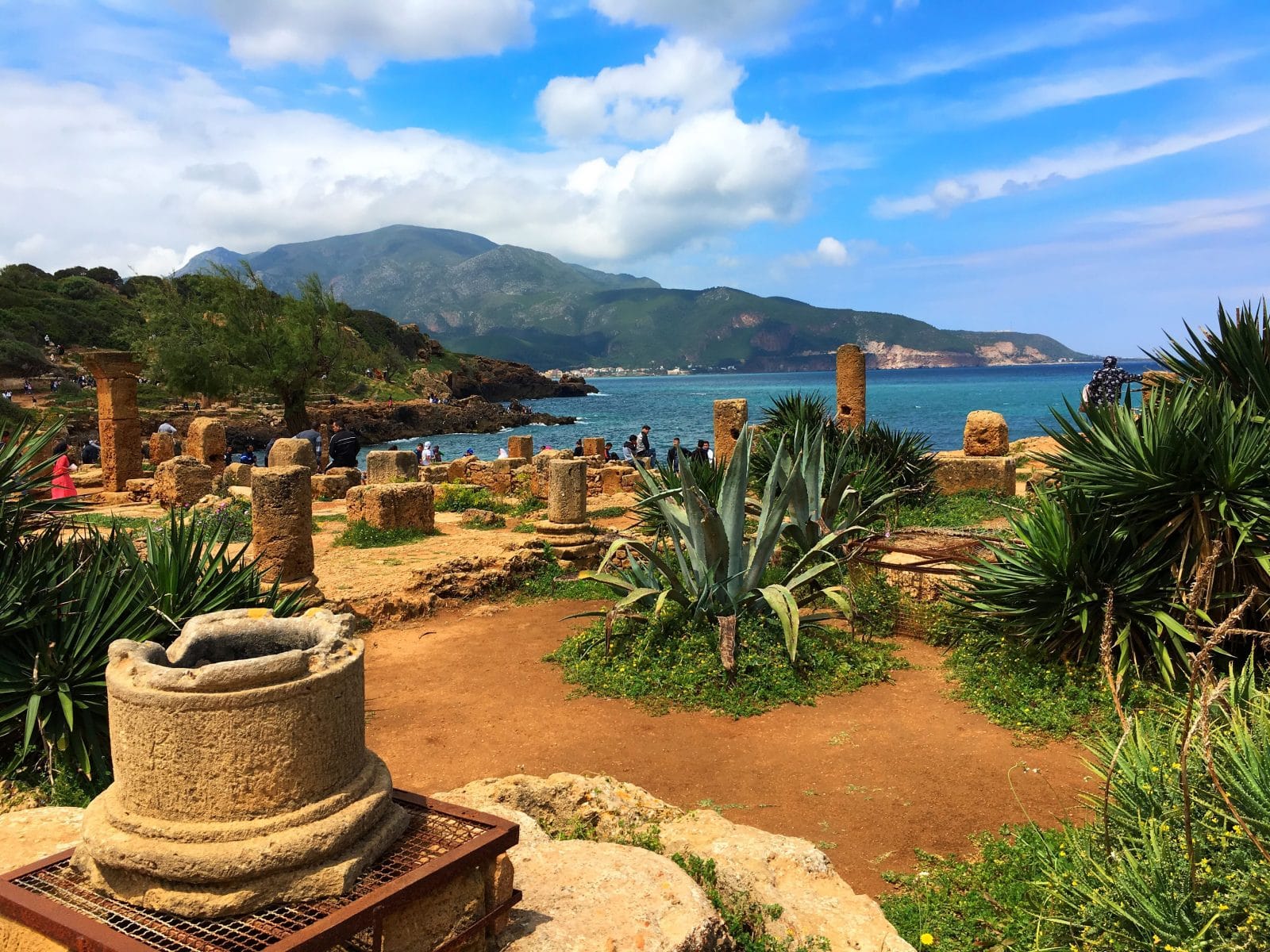
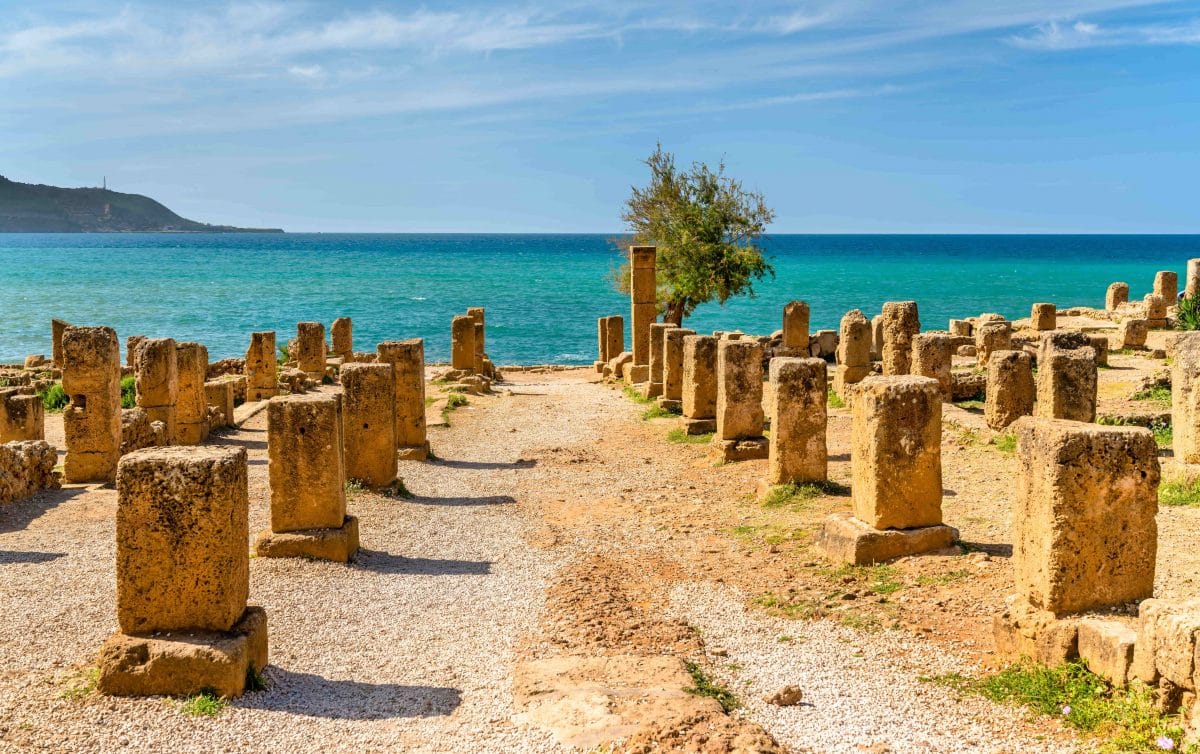
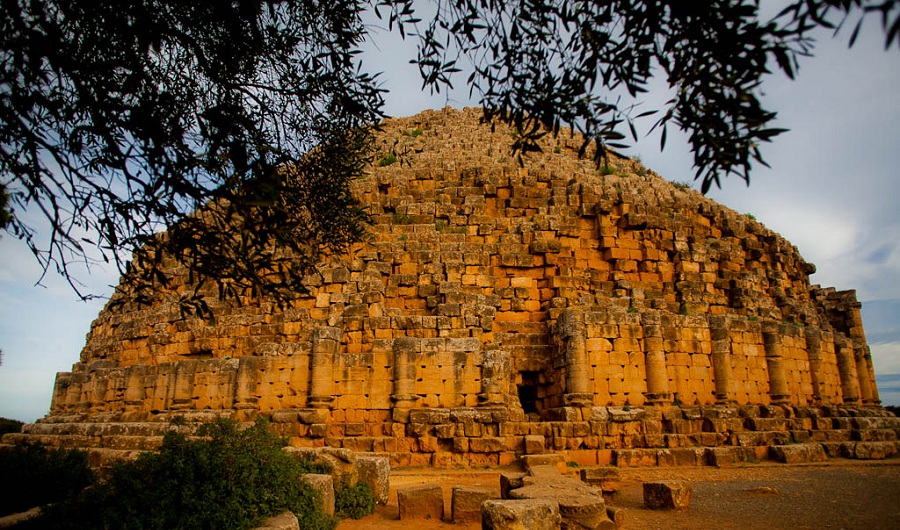
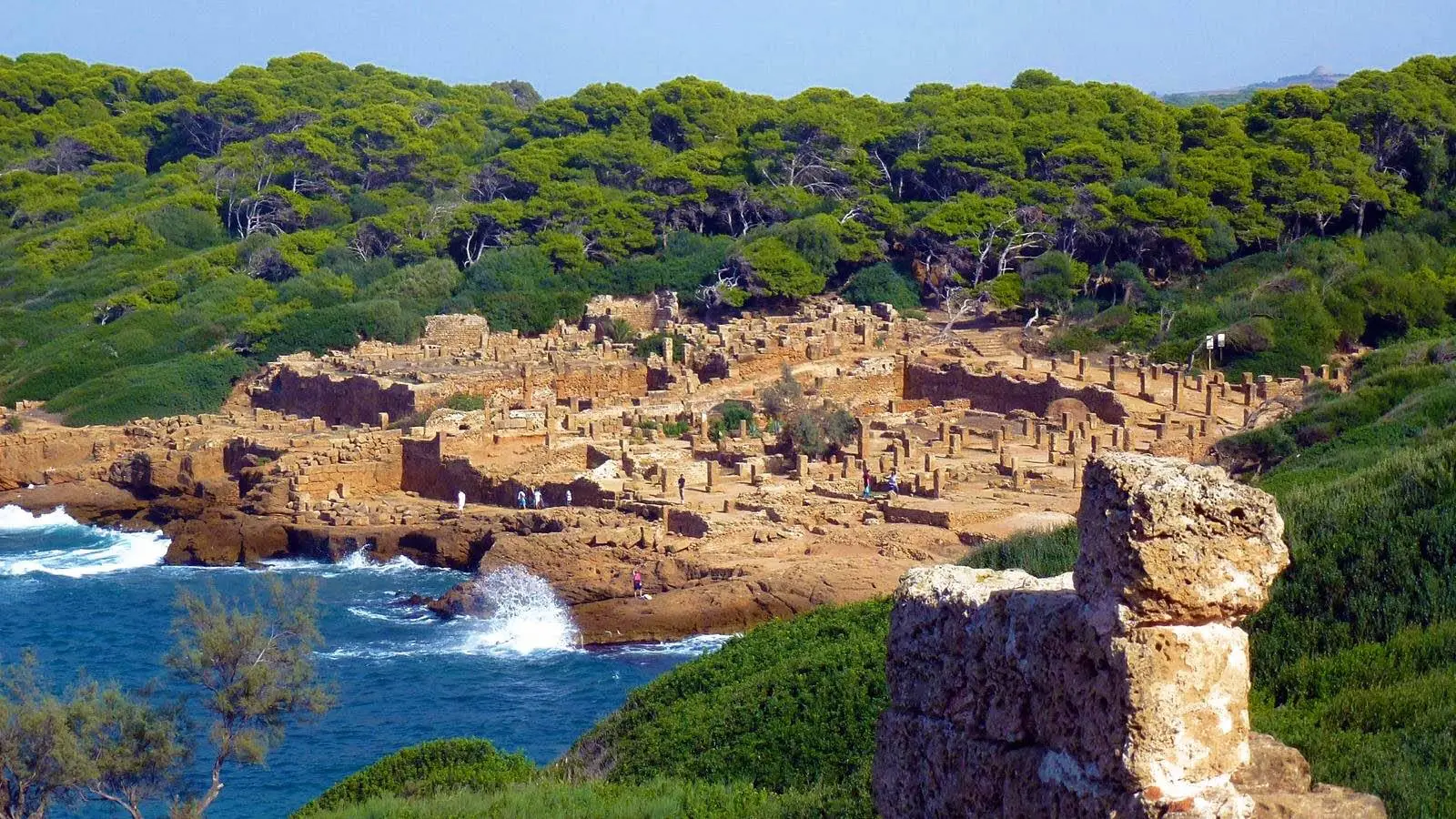



– Tassili n’Ajjer (1982): Apart from its rock art, this site is known for its unique geological formations.

Tassili n’Ajjer, with its lunar-like landscape of significant geological interest, harbors one of the most important collections of prehistoric rock art in the world. Featuring over 15,000 drawings and engravings dating from 6000 BCE to the early centuries CE, it offers insights into climate changes, animal migrations, and the evolution of human life at the edge of the Sahara. The geological formations, resembling “rock forests” of eroded sandstone, add to its exceptional appeal.
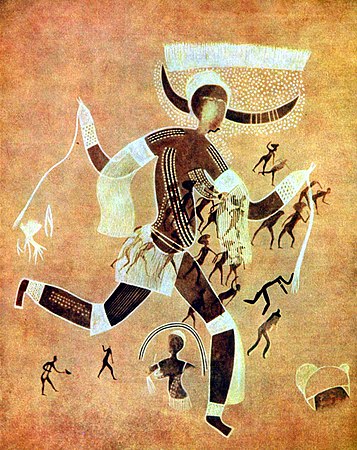
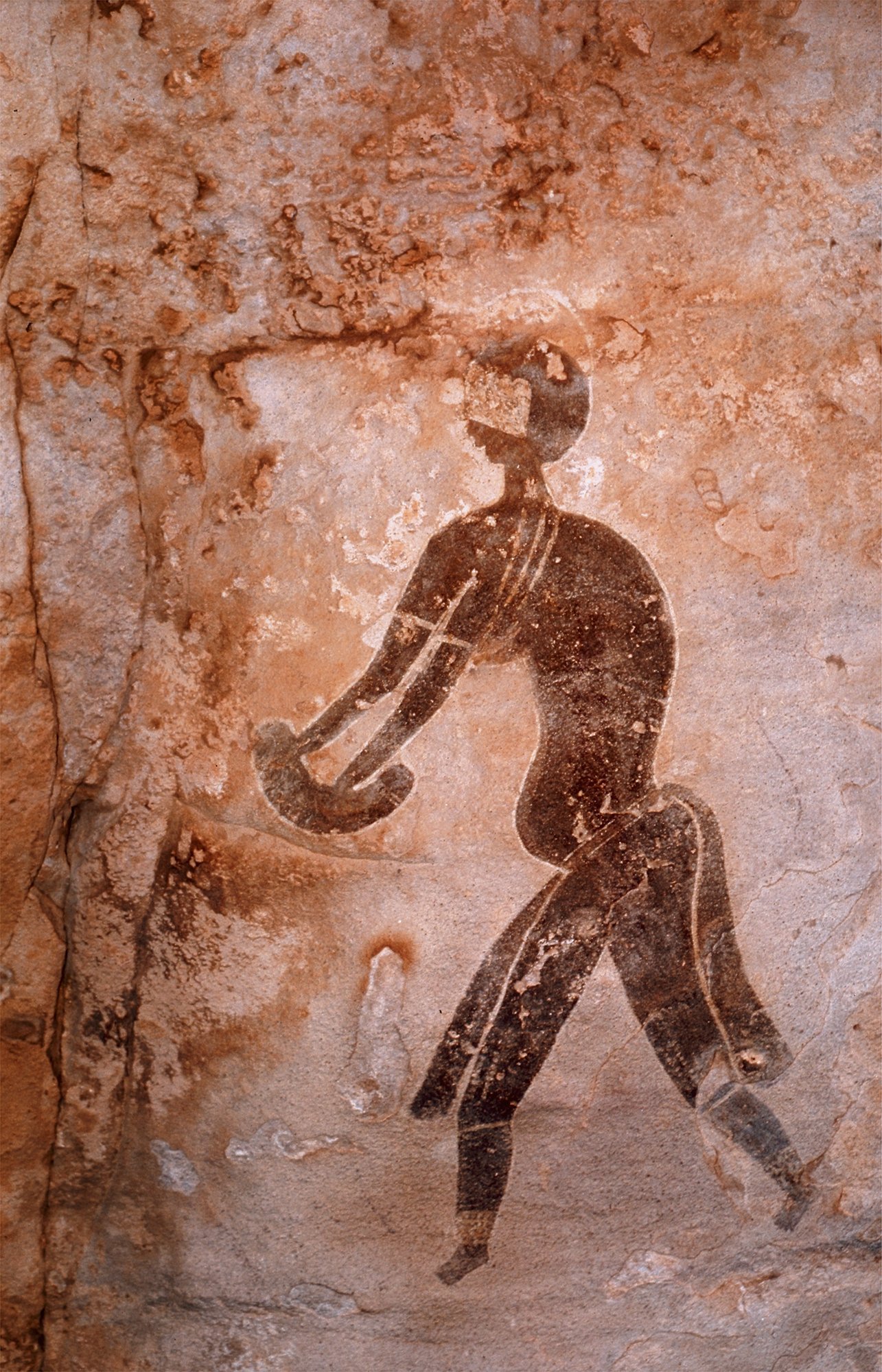
Tassili n’Ajjer is a vast plateau located in southeastern Algeria, bordering Libya, Niger, and Mali, covering an area of 72,000 square kilometers. The exceptional density of paintings, engravings, and numerous prehistoric remains provides outstanding evidence of prehistory. From 10,000 years BCE to the early centuries CE, successive populations left archaeological traces, including settlements, tumuli, and enclosures, yielding abundant lithic and ceramic materials. However, it is the rock art (engravings and paintings) discovered in 1933 that brought worldwide renown to Tassili, with 15,000 engravings documented to date.
The property also holds significant geological and aesthetic value: the panorama of geological formations, featuring “rock forests” of eroded sandstone, presents a surreal lunar-like landscape.
The remarkable ensemble of rock paintings and engravings from various periods has earned global recognition for the property. Representations from the Round Heads period may reflect ancient magico-religious practices dating back some 10,000 years, while depictions from the Bovidian period, portraying daily and social life, exhibit a naturalistic aesthetic realism among the most famous in prehistoric rock art. The latest images depict the domestication of horses and camels.

The rock art images span approximately 10,000 years, and the cultural heritage of Tassili bears witness to living and extinct cultural traditions, informing about the succession and evolution of very ancient civilizations and cultures. Alongside archaeological remains, they vividly testify to climate changes, changes in fauna and flora, and particularly to the opportunities for pastoral life and animal husbandry linked to impregnable defensive sites during certain periods of prehistory.
With eroded sandstone formations forming “rock forests,” the property holds remarkable aesthetic value. The sandstone has preserved intact traces and imprints of major geological and climatic events. Water initially and wind subsequently, through corrosion effects, have contributed to the creation of a distinct morphology, that of a plateau carved by water and shaped by wind.
The geological conformation of Tassili n’Ajjer features Precambrian crystalline units and sedimentary sandstone successions of significant paleogeographic and paleoecological interest.
Humans inhabited this space, developing physiological and cultural behaviors adapted to the harsh climate; their evidence dates back hundreds of thousands of years. The rock art, particularly Tassilian, is the most eloquent expression of the relationship between humans and their environment, with over 15,000 drawings and engravings documenting climate changes, animal migrations, and the evolution of human life at the edge of the Sahara. This art depicts species dependent on water, such as the hippopotamus, and species extinct in the region for several thousand years. This combination of geological, ecological, and cultural elements constitutes an eminently representative example of life’s testimony.







– The Casbah of Algiers (1992): A labyrinthine quarter that provides an immersive experience into the Ottoman period’s urban and architectural landscape.

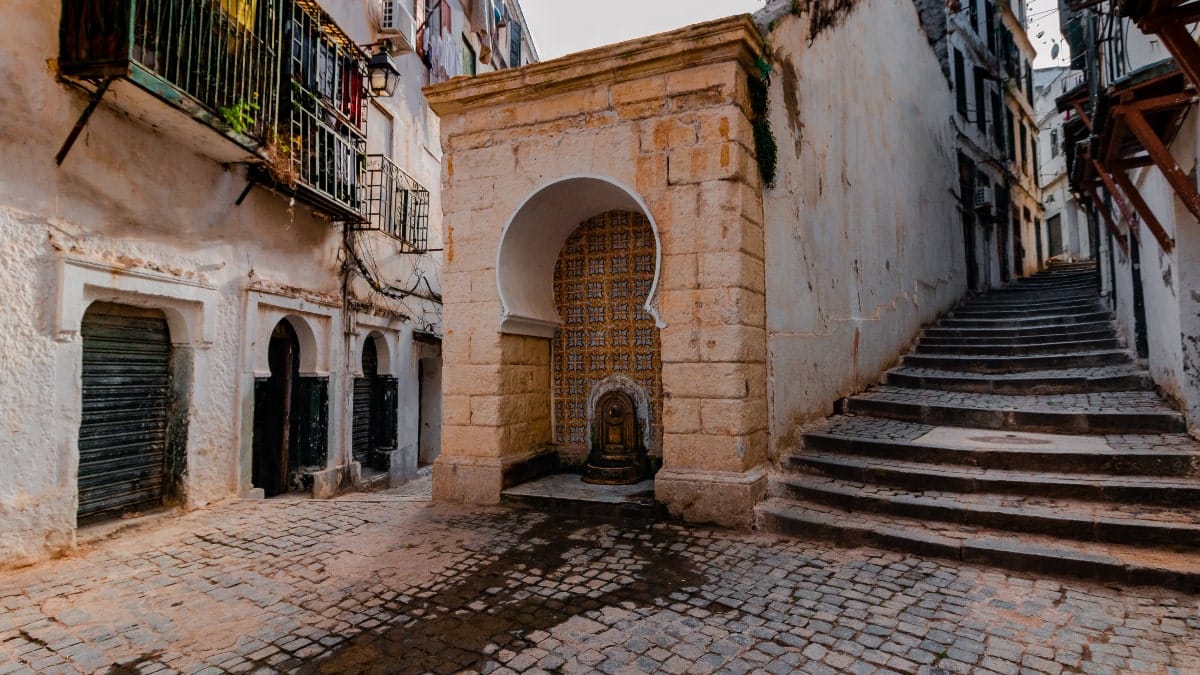
In one of the most beautiful maritime locations in the Mediterranean, overlooking the islets where a Carthaginian trading post was established as early as the 4th century BC, the Casbah stands as a unique type of medina, or Islamic city. This historic and cultural site features remnants of the citadel, ancient mosques, Ottoman palaces, and a traditional urban structure that fosters a strong sense of community.
The Casbah of Algiers is a significant example of a historical Maghreb city that has greatly influenced urban planning in the western Mediterranean and sub-Saharan Africa. Located on the Mediterranean coast, the site has been inhabited since at least the 6th century BC, when a Phoenician trading post was established. Originally, the term “Casbah” referred to the highest point of the medina during the Zirid period, but it now applies to the entire old city of Algiers, within the limits defined by the Ottoman-era walls built at the end of the 16th century.
This vibrant area still preserves many fascinating traditional houses, palaces, hammams, mosques, and various markets. Its urban form is a testament to the layering of various influences in a complex and original system that has adapted remarkably well to the steep terrain.
The Casbah of Algiers has had a considerable impact on architecture and urban planning in North Africa, Andalusia, and sub-Saharan Africa during the 16th and 17th centuries. This influence is evident in the distinctive character of its housing and the density of its urban stratification, serving as a model of human settlement where ancestral lifestyles and Muslim customs have harmonized with other traditions.
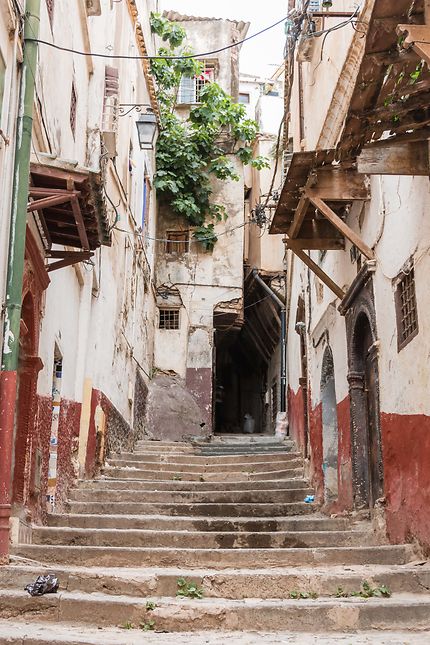
In addition to these, Algeria is home to nearly 1,000 other sites and monuments classified as national heritage, each telling a unique part of the nation’s history.
Thermal Tourism: Rejuvenate in Algeria’s Healing Waters

Algeria’s potential for thermal tourism is immense, with over 282 natural hot springs known for their therapeutic properties. Around 30 of these have been developed into well-equipped thermal stations, drawing thousands of visitors seeking both medical treatments and wellness retreats.

Most of these thermal spas are located in the northern part of the country, though some can be found in the Sahara, offering a unique desert spa experience. The government is actively modernizing these facilities and encouraging new investments to meet the growing demand for wellness tourism.



1- Priority thermal springs
2- Traditional thermal bath
Map of traditional thermal baths and resources
Some of Algeria’s Best Attractions
Casbah’s Mosques and Palaces
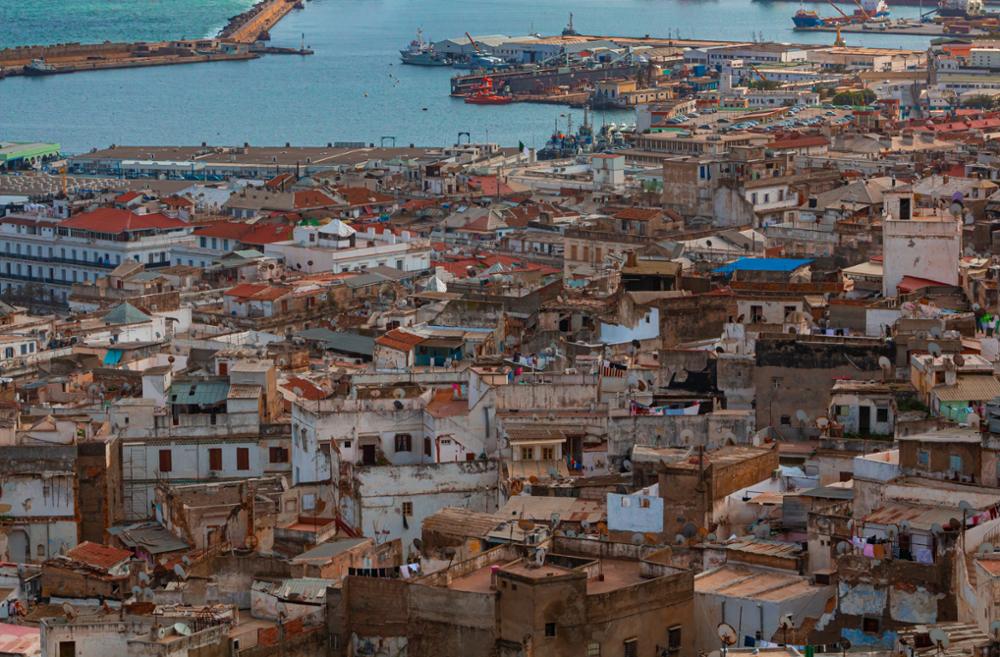
The Casbah, Algiers’ historic center, stands as a testament to the city’s rich cultural and architectural heritage. Known for its labyrinthine narrow streets and traditional Islamic architecture, the Casbah houses several magnificent mosques and palaces that reflect centuries of history and cultural influence.
Jamaa al-Jdid Mosque: Located in the lower Casbah near the coast, this mosque, built in 1660, showcases exquisite Ottoman-style architecture. Adorned with domes, a clock, and a towering minaret standing at 27 meters tall, Jamaa al-Jdid Mosque is a symbol of Algiers’ religious and architectural splendor.
Jemaa Kebir Mosque: This monumental structure dates back to 1907, with its minaret dating even earlier to 1324. Its grandeur and historical significance make it a must-visit for those exploring Algiers’ religious landmarks.
Ali Betchine Mosque: Despite its modest size, Ali Betchine Mosque is revered for its stunning Maghrebi medieval architecture. Featuring a large central dome and a 15-meter minaret, characteristic of the whitewashed cubic style, this mosque exemplifies the timeless beauty of Islamic architectural traditions.

The Palaces of Dar Aziza and La Jenina
Dar Aziza Palace: Situated within the Casbah, Dar Aziza Palace is a masterpiece of Ottoman architecture dating back to the 16th century. Once a royal residence, then an episcopal see, and later serving various administrative functions, it now houses the National Office for the Management and Exploitation of Protected Cultural Properties (OGEBC). Visitors may have the opportunity to explore its courtyard, subject to the discretion of the custodian.


La Jenina Palace: A mere 13-minute walk from Dar Aziza, La Jenina Palace is Algiers’ oldest palace, constructed in the early 16th century. Despite facing numerous calamities such as fires and earthquakes over the centuries, La Jenina Palace remains a poignant reminder of the city’s enduring history. Visitors can explore its galleries (s’hine) and immerse themselves in the narrative of Algiers’ past.
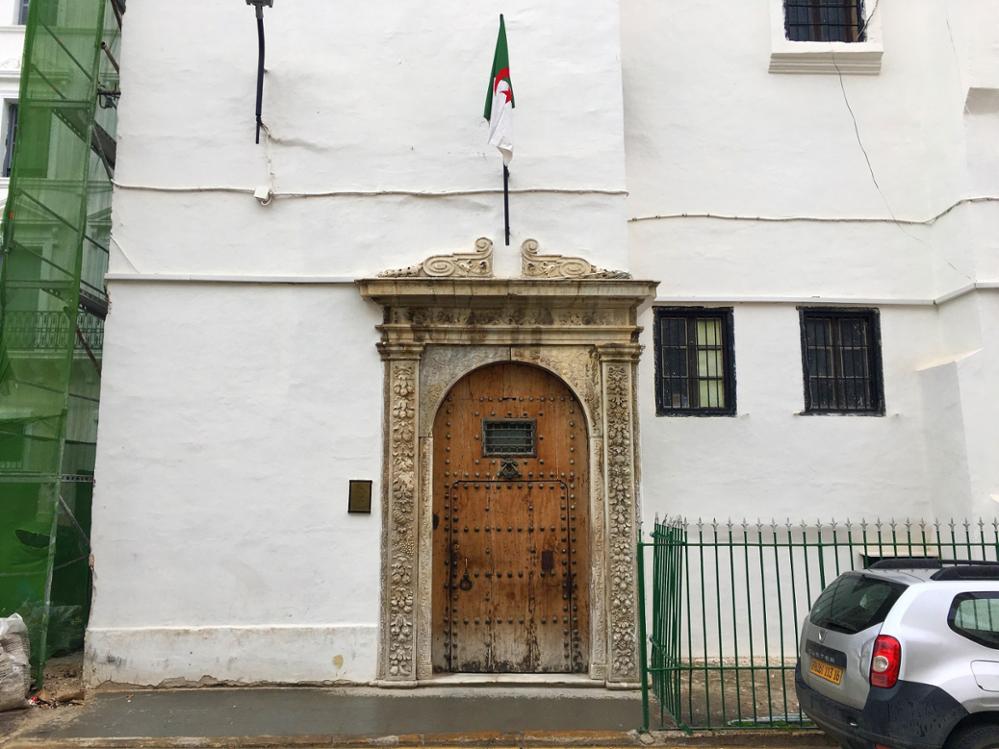
Maqam Echahid

The Martyrs’ Memorial, also known as the Sanctuary of the Martyr or Maqam Echahid in Arabic, is a war memorial overlooking the city of Algiers. It was erected in 1982 to commemorate the 20th anniversary of Algeria’s independence (July 5, 1962) and honor the chahids, the fighters of the Algerian War of Independence who martyred for the liberation of the country.
The monument, standing at a height of 92 meters, was designed according to a model by the artist Bachir Yellès. It features three stylized palm fronds representing the “cultural, agrarian, and industrial revolutions” or symbolizing three periods of Algeria’s history: resistance to occupation and colonization, the national liberation war, and the present and future of the country. The structure consists of three concrete palm fronds that converge halfway up (at 47 meters). These fronds support a complex of five levels, with four reserved for technical installations and the fifth, topped by an Islamic-style turret with a diameter of 10 meters, reaching a height of 25 meters and crowned by a dome of 6 meters.

“Jardin d’Essai” – A Jewel in Algiers!
The Jardin d’Essai in Algiers is ranked among the top 10 most beautiful gardens in the world due to its diversity, originality, and design. Nestled in the Hamma neighborhood, between the Mediterranean Sea and the foothills that rise above Algiers, this garden benefits from an exceptional microclimate, shielded from desert winds by the mountains and influenced by maritime breezes. Originally established by French botanists and General Avisard in 1832, the botanical garden once spanned over 60 hectares. Today, 32 hectares remain protected as an integral part of the city’s heritage.
From the moment you enter, the lush vegetation is striking. Over several decades, plants and trees from around the globe were brought here, creating a rich diversity of species that form the garden’s core.
Upon entering, visitors are greeted by two contrasting garden styles. The first is a grand space that stretches from the seaside to the base of the mountain, home to the Museum of Fine Arts. This area features the formal alignment of French gardens, reminiscent of 18th-century French estates, complete with lawns, pools, and terraces, but with a Mediterranean twist evident in the abundant palm trees.
Adjacent to the French garden, the English-style garden offers shaded paths amidst dense and varied vegetation. The luxuriant greenery and moisture from the pools provide a refreshing atmosphere, even in the summer heat.
From the large terrace, visitors can enjoy a panoramic view of the French garden extending to the sea, with the Museum of Fine Arts overlooking the gardens from behind.
At the highest point above the Jardin d’Essai stands the Martyrs’ Memorial, a significant monument in Algiers representing the three pillars of post-colonial Algeria: agriculture, culture, and industry.
Among the garden’s unique trees is the Chorisia speciosa from Brazil, notable for its bottle-shaped, spiny trunk and vibrant pink flowers that carpet the ground in summer. Its fruit produces a white fiber used for stuffing pillows and duvets in Brazil.
Walking through the garden, one encounters numerous trees, many from tropical regions, that have thrived in this favorable environment.
An avenue of plane trees, planted in 1845, evokes a sense of France. These trees include three varieties, two original and one hybrid.
Another fascinating feature is the “dragon trees,” named for their branches resembling dragon limbs and their foliage forming umbrella-like canopies.
In 1932, the garden was a filming location for “Tarzan the Ape Man,” starring Johnny Weissmuller. At the time, the park was considered North Africa’s premier zoo, further immortalizing its mythical status. The garden’s fig trees (Ficus), including the well-known common fig, are part of a vast family of over 1,000 species, adding to the botanical richness of this historic park.

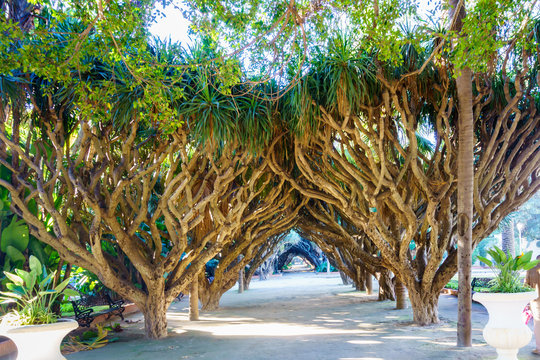
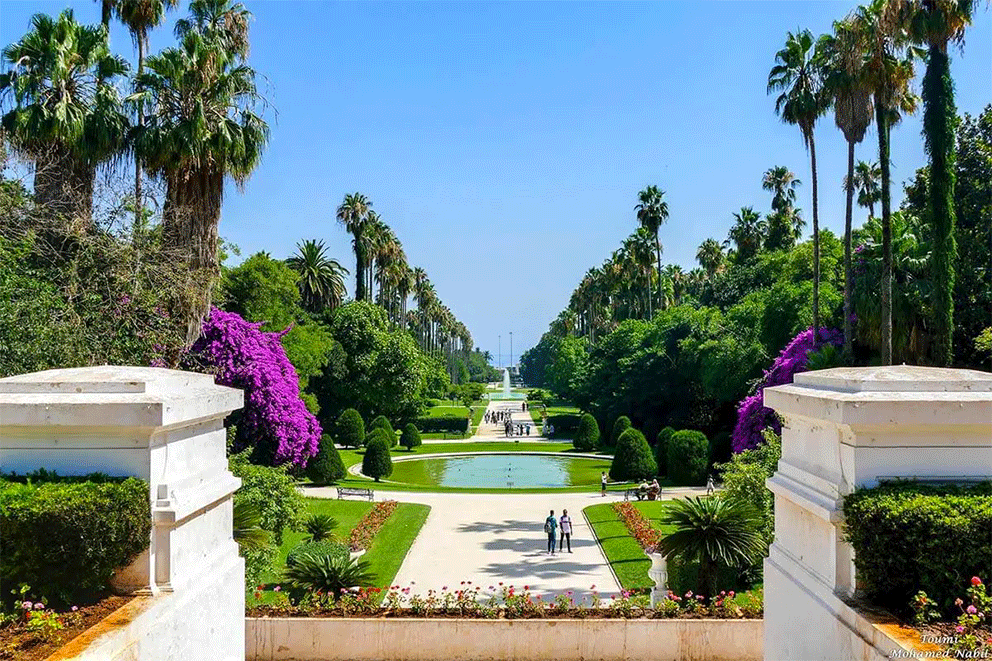
The Great Mosque of Algiers: A Fusion of Modernity and Tradition
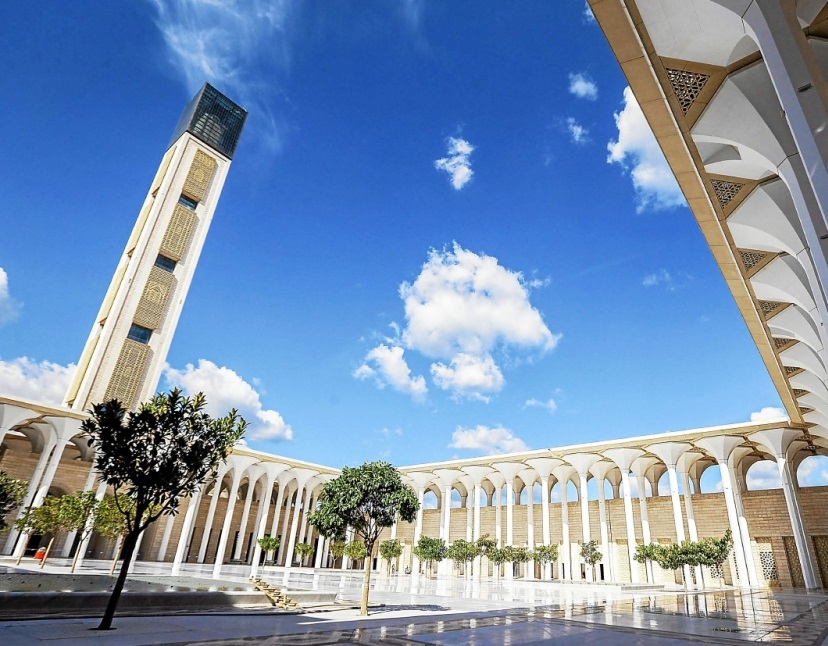
The Great Mosque of Algiers or Djamaâ El-Djazaïr stands as a testament to both modern architectural marvels and traditional Islamic aesthetics. Classified as the largest mosque in Africa and the third-largest in the world, after Masdjid Al-Haram in Mecca and Masdjid Al-Nabawi in Medina, it embodies the fusion of modernity and tradition.
Designed with a modernist approach, the mosque’s interior features Andalusian influences, geometric architecture, and intricate decorations in wood, marble, and alabaster. The walls are adorned with six kilometers of Arabic calligraphy from the Quran, complemented by turquoise prayer mats.
Spanning 27.75 hectares, the mosque’s prayer hall alone covers over 2 hectares, accommodating up to 120,000 worshippers. The hall, resembling a massive cube, stands approximately 22.5 meters high, with a dome soaring to 70 meters at its apex. All religious elements, including the Qibla wall, Mihrab, and Minbar, blend seamlessly into the modern aesthetic of the hall.
One of the most striking features of the mosque is its minaret, standing at a staggering height of 267 meters, making it the tallest in the world. Equipped with elevators, the minaret offers panoramic views of Algiers and the Bay of Algiers, resembling a skyscraper in dimension and function.
The mosque complex extends beyond religious functions, encompassing cultural and educational buildings. These include a house for Quran studies, an Islamic cultural center, a library housing a million books, lecture halls, museums, research centers, and more. These facilities position the mosque as not only a center of religious activity but also a hub for social, cultural, and educational events.
Furthermore, the mosque’s outdoor square, administrative headquarters, underground car park, green spaces, and shops contribute to its functionality and significance in Algerian society. Notably, the mosque boasts a highly effective anti-seismic system, capable of mitigating over 70% of earthquake forces.

Beni Add Ain Fezza Caves: A Subterranean Marvel in Tlemcen

The Beni Add Ain Fezza Caves, located in the picturesque province of Tlemcen, stand as a testament to nature’s artistry. Renowned for their international significance, these caves are a treasure trove of natural and archaeological riches. They maintain a constant temperature of 13 degrees Celsius throughout the year, making them an inviting destination in any season.
Visitors to this enchanting site are often captivated by its serene ambiance. The gentle cooing of pigeons, which find a safe haven within the cave’s confines, adds to the tranquil atmosphere. The cave’s interior is adorned with stunning stalagmites, enhancing its awe-inspiring beauty and grandeur. As one of the region’s natural heritage sites, the Beni Add Ain Fezza Caves offer a blend of fascination and amazement, providing a unique and memorable experience for all who venture into their depths.





Algiers’ National Museum of the Moudjahid: A Chronicle of the Algerian Resistance


The National Museum of the Moudjahid in Algiers serves as a comprehensive narrative of the Algerian struggle for freedom and dignity. This museum offers visitors a detailed exploration of the key stages of Algeria’s armed resistance, particularly highlighting the North Constantine Offensive and the Congress of Soummam.
Upon entering the museum, visitors are greeted by a mural fresco displaying a chronological array of photographs. These images, part of the museum’s extensive archives, have been gathered with significant contributions from the mujahideen, preserving the collective national memory, as explained by Salah Eddine Ranem, the cultural adviser to the museum.
One significant exhibit focuses on the North Constantine Offensive of 1955, an event of immense importance that expanded the war throughout Algeria and brought the Algerian cause to the United Nations’ agenda in September 1955. The archives here highlight the Algerians’ determination to unite in revolution and reveal the colonial forces’ vengeful reactions, including the bombing of villages and the massacre at Skikda stadium on August 23, 1955, resulting in 12,000 chahid, detailed by Oussama Houhou, head of the Museum’s history research department.
The museum also provides an in-depth look at the Soummam Congress, held in Ifri, near Bejaïa, showcasing the organization and coordination of the armed struggle. Displays of light and heavy weaponry, as well as wireless communication devices, illustrate the technical and military advancements achieved by the revolutionaries, despite the colonial siege.
A visit to the museum concludes at the Dome of Contemplation, an Islamic architectural masterpiece adorned with golden Quranic verses. The centerpiece, a luminous rock symbolizing Algeria’s mountains on sandy soil reminiscent of the Sahara, underscores the country’s geographical diversity and its role in the fight for sovereignty.
The museum’s exhibits include paintings, weapons, archival documents, and personal items from the mujahideen who fought against French colonization from 1830 to 1962. Noteworthy artifacts include a painting of Emir Abdelkader by Ange Tissier from 1853, weapons and belongings of the Emir, and the fan used by Dey Hussein to slap the French consul in 1827.
Located beneath the Monument of Martyrs (Makam el Chahid) in El Madania, the museum’s mission is to collect, preserve, and display objects and memories from the struggle against colonialism. It traces Algeria’s history from the French invasion in 1830 to Independence Day in July 1962, divided into three periods: the popular armed resistance (1832-1919), the political resistance (1919-1954), and the national revolution (1954-1962).
The museum’s lower floor features a domed sanctuary, a tranquil space with low lighting and walls inscribed with verses from the Holy Quran, providing a reflective atmosphere to honor Algeria’s path to independence.

Notre Dame d’Afrique: “Our Lady of Africa” Catholic Basilica in Algiers
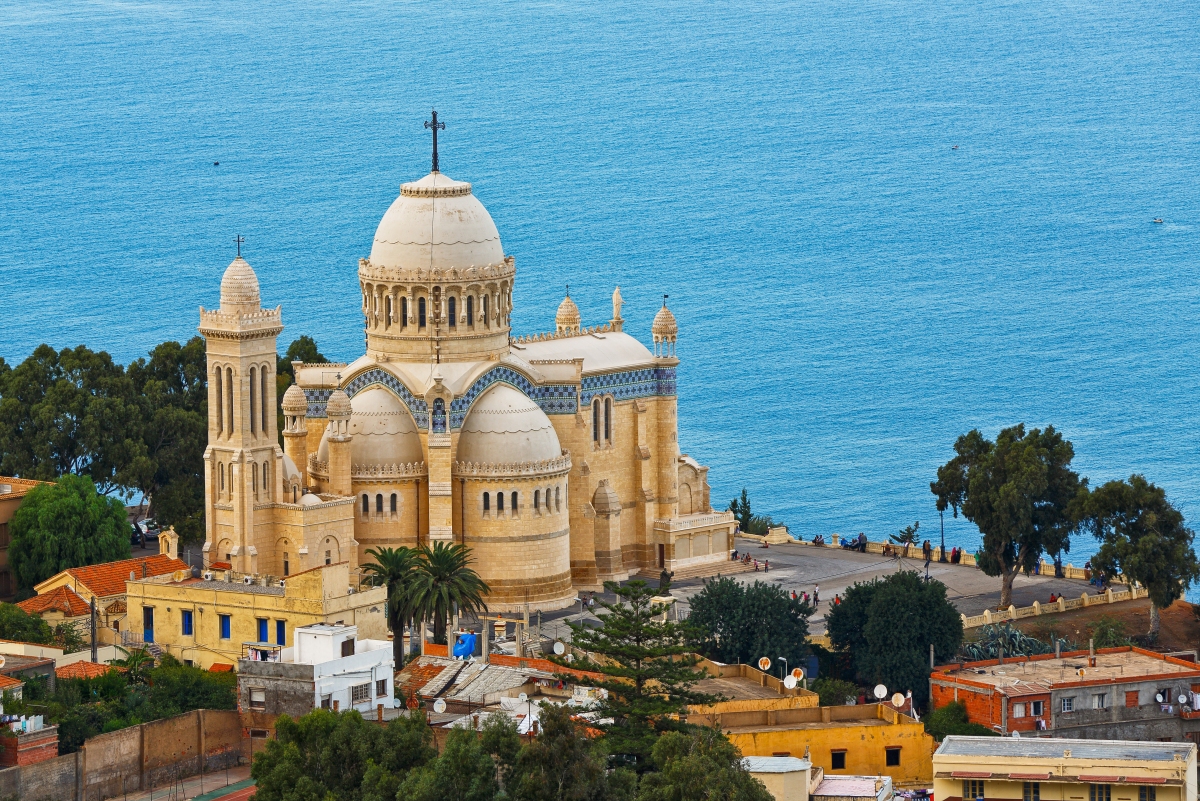
Perched on a cliff overlooking the Bay of Algiers, Notre Dame d’Afrique is one of the city’s most iconic landmarks. This 19th-century Roman Catholic basilica, designed by Jean Eugène Fromageau, the chief architect for ecclesiastical buildings during French colonial rule, took fourteen years to complete and was inaugurated in 1872.
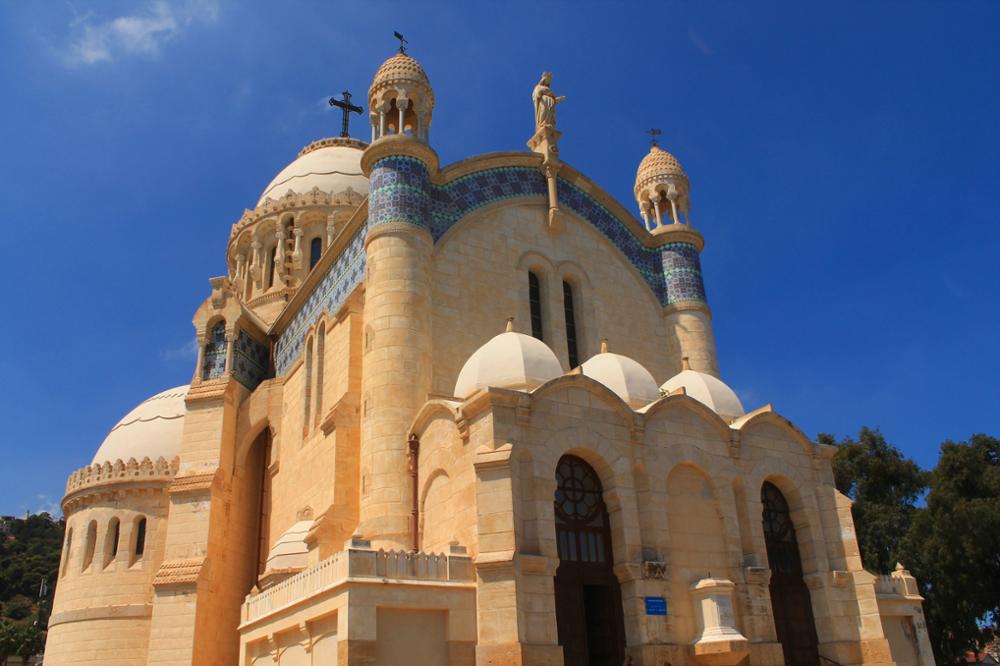 Notre Dame d’Afrique is celebrated for its stunning neo-Byzantine architecture and meticulously restored interior, both of which offer breathtaking views of the sea and the capital. Located on a hilltop at the eastern edge of Algiers, the basilica is not easily accessible by foot from the city center; a taxi ride, costing around Dh400, is recommended.
Notre Dame d’Afrique is celebrated for its stunning neo-Byzantine architecture and meticulously restored interior, both of which offer breathtaking views of the sea and the capital. Located on a hilltop at the eastern edge of Algiers, the basilica is not easily accessible by foot from the city center; a taxi ride, costing around Dh400, is recommended.
The basilica’s exterior is characterized by a large silver dome topped with a cross, smaller half-domes, and a blue-and-white mosaic frieze encircling the building. Smaller domed turrets and a square bell tower, also topped with a dome and cross, add to its grandeur. The entrance is marked by three domes, and the interior boasts rich decorations, including religious paintings, arches, columns, mosaic work, and stained glass windows.
One of the basilica’s most notable features is its colonial inscription: “Notre Dame d’Afrique priez pour nous et pour les Musulmans” (“Our Lady of Africa, pray for us and for the Muslims”), which symbolizes religious tolerance in Algeria.
Located on the north side of Algiers on a 124-meter (407-foot) cliff, Notre Dame d’Afrique used to be accessible from the city center by cable car. It is often considered the counterpart to Notre-Dame de la Garde in Marseille, symbolizing a connection across the Mediterranean.

The National Museum of Fine Arts in Algiers
The National Museum of Fine Arts in Algiers stands as a beacon of artistic excellence in Africa, having opened its doors in May 1930. Nestled within a four-story building offering stunning panoramic views of the sea and the Jardin d’Essai du Hamma, this museum houses a diverse collection of over 8,000 masterpieces spanning from the 14th to the 21st century.
Visitors to the museum can marvel at works by renowned masters such as Delacroix, Monet, Matisse, and Rodin, showcasing their artistic prowess across various mediums including prints, paintings, sculptures, ceramics, and furniture. These pieces not only reflect the evolution of Western art but also highlight Algeria’s rich cultural tapestry.
In addition to international treasures, the museum proudly features works by esteemed Algerian artists such as Racim, Bays, and Yellès. Their creations offer profound insights into Algerian heritage, traditions, and artistic expression, enriching the cultural narrative preserved within the museum’s walls.
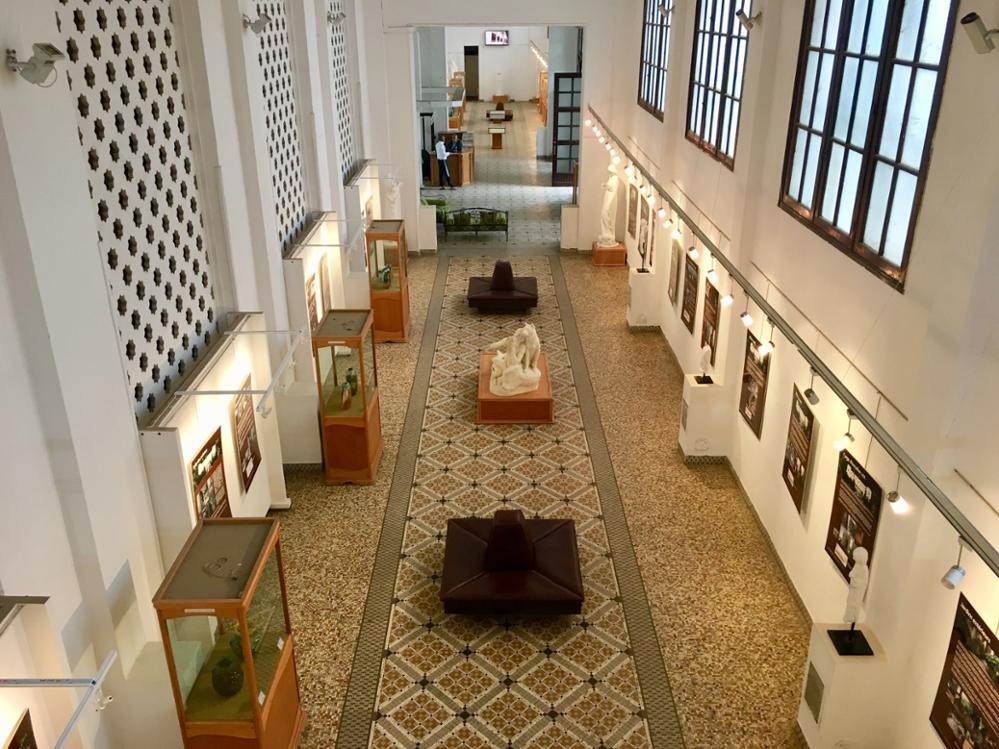
Cap Carbon, Béjaïa
Cap Carbon is an Algerian cape located in the Wilaya of Béjaïa, north of the port of Béjaïa.
In 1907, it was equipped with a lighthouse built at 220 meters above sea level, making it one of the highest lighthouses in the Mediterranean Sea and the tallest natural lighthouse in the world.
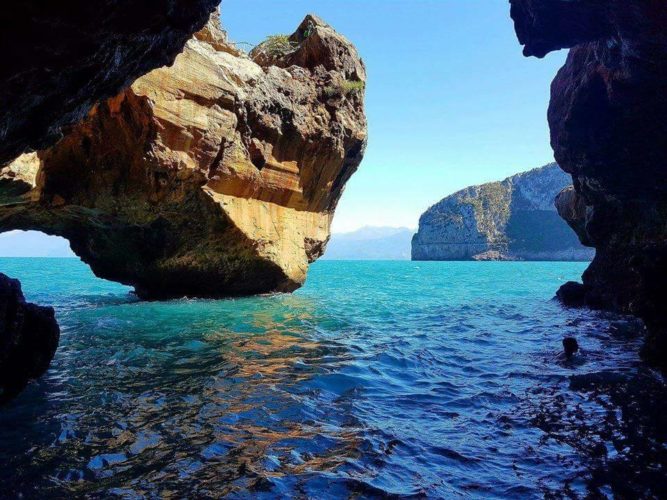

Theniet El Had National Park: A Natural Gem in Algeria’s Atlas Mountains
Located near the town of Theniet El Had in the Tissemsilt province of northwestern Algeria, Theniet El Had National Park is a significant Algerian national park nestled in the heart of the Tell Atlas and at the southern edge of the sprawling Ouarsenis mountain range. Encompassing an area of 3,425 hectares, this park boasts vast forests of Atlas Cedar (Cedrus atlantica) along with a rich variety of flora and fauna. Additionally, it offers excellent opportunities for hiking and exploration.
Park Description
The Cedar Forest of Theniet El Had spans 3,424 hectares, with 1,000 hectares dedicated to cedar trees in the Ouarsenis Massif of the Tell Atlas. Established by decree in 1983, the national park replaced a smaller reserve designated in 1929. Notable features include Ras El Braret, the highest peak at 1,787 meters, and Kef Siga at 1,784 meters, characterized by its towering rock formations and iconic Atlas Cedars. The park entrance near Theniet El Had opens into a vast clearing surrounded by ancient cedar trees, adorned with a forest house and the historic Chalet Jourdan, built in 1887. Noteworthy trees like the “Soltana” and “Sultan” cedars, with trunks measuring over 9 meters in circumference, add to the park’s allure.
Wildlife
Theniet El Had National Park is a sanctuary for diverse flora and fauna, some of which are endangered species crucial for global biodiversity conservation. Mammals, such as Wild Boars, Wildcats, and Hedgehogs, as well as various bird species including the Black Kite and Bonelli’s Eagle, thrive within the park’s boundaries. The park’s rich biodiversity contributes significantly to the protection of endangered species and the preservation of global wildlife diversity.
Tourism
Tourists are drawn to Theniet El Had National Park for its stunning landscapes, including the Cedar Forest and panoramic views from peaks like Kef Siga, where the Mediterranean Sea is visible on clear days. Traditional rural life persists in the region, with seasonal festivities like fantasias celebrating cultural and religious events. The park offers numerous marked trails for hiking, mountain biking, and horseback riding, as well as camping facilities near Theniet El Had. In winter, activities like cross-country skiing and snowshoeing attract outdoor enthusiasts.
Cultural Significance
The park’s cultural significance is underscored by the presence of ancient rock art sites like Kasria, located in the Sidi Boutouchent commune on the park’s southern slopes. These rock paintings offer insights into the region’s rich historical and cultural heritage, adding another dimension to the park’s appeal.
In summary, Theniet El Had National Park stands as a testament to Algeria’s natural beauty and cultural heritage, offering visitors a unique opportunity to experience the splendor of the Atlas Mountains and immerse themselves in the region’s rich biodiversity and cultural traditions.








Chréa National Park: A Snowy Wonderland in Algeria


Nestled within the undulating rugged hills of the Blidean Atlas, Chréa National Park emerges as one of Algeria’s hidden gems, especially during the winter months.
After Algeria gained independence, the expansion of the reserve, specifically in 1983, led to its classification as a biosphere reserve in 2002 by the International Coordinating Council of the Man and the Biosphere Programme (MAB) under UNESCO.
The Chréa National Park, located south of Algiers in the Blida massif, is a mountainous park known for features such as Monkey Creek, the Chiffa Gorges, the Fern Pass trail, and ancient cedar forests. This idyllic location, captivating in both winter and summer, showcases the dominance of nature. Chréa spans over 26,587 hectares, providing stunning views in various directions.
To the north, the park overlooks the lush plain of Mitidja, where the rich agricultural lands of the foothills and the Sahel anticline, traversed by the imposing gorge of the Oued Mazafran, create a puzzle-like pattern. The Djebel Chenoua mountains form a natural barrier perpendicular to the Blida Atlas, seamlessly blending into the Atlas chain and the Mediterranean Sea. Looking south reveals a plunging view of the Takitount anticline, Talakat Pass, the valleys of the Oueds Mektaa and Merdja, extending visibly in clear weather over the high plains of Titteri. Towards the east, the landscape unfolds to showcase the Bibans mountain range and the heights of the Djurdjura.
Chréa National Park, with its diverse panoramas and expansive dimensions, stands as a dreamlike destination to explore, where nature takes center stage in every season, offering a fresh and captivating perspective each time.
Winter Sports in the Tell Atlas
The Tell Atlas, known for its diverse landscapes, becomes a playground for snow enthusiasts during the winter season. The grotto of Chiffa stands as a testament to the region’s geological wonders, while the snow-covered slopes become an ideal destination for thrilling skiing adventures. Chréa National Park, with its pristine white landscapes, offers a surreal experience for those seeking winter sports in an African setting.
Flora and Fauna Amidst the Snow
Beyond its winter charm, Chréa is home to a rich variety of flora and fauna. The Atlas cedar forests create a picturesque backdrop, and the park is adorned with cork oak trees, holm oak, pine, and over 1100 different plant species, including trees, shrubs, and herbaceous plants. Cedar, green oak, cork oak, thuja, Aleppo pine, and various other species form the predominant vegetative components of the park. Notably, the park is home to 17 species of orchids, medicinal plants, mycological species, and lichens. Additionally, rare and endangered species like holly and yew add botanical uniqueness, with the Berberis, a plant favoring sunny slopes and hilltops, serving as a botanical curiosity.

Chréa National Park hosts over 100 bird species and around twenty mammal species. Among the well-known mammals are the Barbary macaque, genet, lynx, striped hyena, mongoose, porcupine, golden jackal, fox, and wild boar. Otters and weasels remain rare or declining species. Birds of prey, including the golden eagle, Bonelli’s eagle, peregrine falcon, griffon vulture, and Egyptian vulture, are prominently represented. The park also features other vertebrates such as lizards and amphibians.

Noteworthy natural attractions include:
- The “Fern Pass” trail, following the mid-slope valleys.
- Peaks and sharp ridges located southeast of Douar Ima Alima.
- The surroundings of the Sidi Abdelkader path with century-old specimens and clusters of yew and holly mixed with cedars, creating splendid landscapes. Despite its compact size, Chréa National Park shelters remarkable wildlife. The Atlas cedar forest harbors the Barbary macaque, an endangered primate species. Thriving in its pristine habitat, this ancient primate makes Chréa a vital sanctuary. Recognized by UNESCO as a biosphere reserve, the park significantly contributes to the conservation of these unique species.

As snow blankets the landscape, Chréa National Park becomes a refuge for various bat species. The common pipistrelle, greater horseshoe bat, and lesser horseshoe bat take center stage. The agile flight of the common pipistrelle plays a crucial role in maintaining ecological balance by consuming thousands of insects each night.
The greater horseshoe bat, distinguished by its horseshoe-shaped nose-leaf used in echolocation, underscores the park’s commitment to biodiversity preservation. Contrary to common beliefs, bats like the greater horseshoe have an impressive lifespan, with some individuals living up to 30 years. Navigating through the snowy landscape, these bats contribute to the unique winter symphony of the park.
In the heart of a vibrant and lush ecosystem, these animals thrive amid dense trees, diverse vegetation, and flowing springs. This region has transformed into an open and diverse ecological museum throughout the seasons, attracting tourists from both the local and international communities. Visitors come to marvel at the picturesque landscapes, breathe in the fresh air, and relish the gentle breezes against the backdrop of flowing water and the melodious chirping of birds. Whether it’s the captivating scenes during the summer under the clear blue sky or the winter’s serene beauty when the snow blankets the mountains, turning them into a pristine white spectacle reminiscent of a charming bride – this area remains a haven for nature enthusiasts year-round.
Barbary macaque, scientifically known as “Macaca sylvanus”
The Barbary macaque, scientifically known as “Macaca sylvanus,” is a type of tailless monkey that has inhabited Algeria for centuries. It is commonly referred to as “Magot” or “Barbary ape.” The name “Magot” is derived from the Berber regions, inhabited by the Amazigh (Berber) people of North Africa, while locals also call it “Zaatout.”
This sociable primate, belonging to the Cercopithecidae family, lives in groups ranging from 10 to 100 individuals. The average size ranges from 56 cm to 63 cm, with males being larger than females. Their fur color changes with age, transitioning from dark brown to yellow, and their faces have a dark pink hue.
The Barbary macaque is primarily found in the mountainous regions of Blida, Jijel, and Djurdjura. It has been classified as “Vulnerable” by the International Union for Conservation of Nature (IUCN) and is listed under the Convention on International Trade in Endangered Species of Wild Fauna and Flora (CITES), making international trade of this species illegal.

As a herbivore, the Barbary macaque plays a crucial role in maintaining environmental balance. It faces few natural predators, with humans being its primary threat due to habitat disruption. International laws prohibit hunting and causing harm to Barbary macaques. Additionally, feeding them is discouraged to avoid interference with their ecological dynamics.
The population of Barbary macaques has declined in recent years, leading to their classification as a “Vulnerable” species in 2009. This emphasizes the importance of conservation efforts to protect this unique primate from further endangerment.

Accessible Winter Wonderland
Situated a mere 50 km from the bustling capital, Algiers, Chréa National Park offers easy accessibility for winter enthusiasts. Whether arriving by road from Algiers or taking advantage of airport shuttles and car hire services, the snowy haven of Chréa beckons, promising an unforgettable winter retreat just a stone’s throw from the city.

In conclusion, Chréa National Park invites winter adventurers to embrace the magic of snow in the heart of Algeria, where skiing, diverse wildlife, and enchanting landscapes converge to create an extraordinary winter wonderland.




Constantine: Algeria’s Millennial City on a Rock

Nestled in the northeast of Algeria, Constantine stands as one of the country’s largest and oldest cities, with a history spanning millennia. Archaeological findings suggest human occupation in the area dating back a million years. Over the centuries, Constantine has been a cultural crossroads, known by various names: “SarimBatim” by the Phoenicians, “Cirta” as the capital of Numidia, and “Constantina” after Emperor Constantine I rebuilt it in 313 AD following its destruction by his rival, Emperor Maxentius.
Constantine captivates visitors with its rich history and numerous cultural and architectural treasures. Here’s a look at some of the city’s most iconic features:
The City of Suspended Bridges

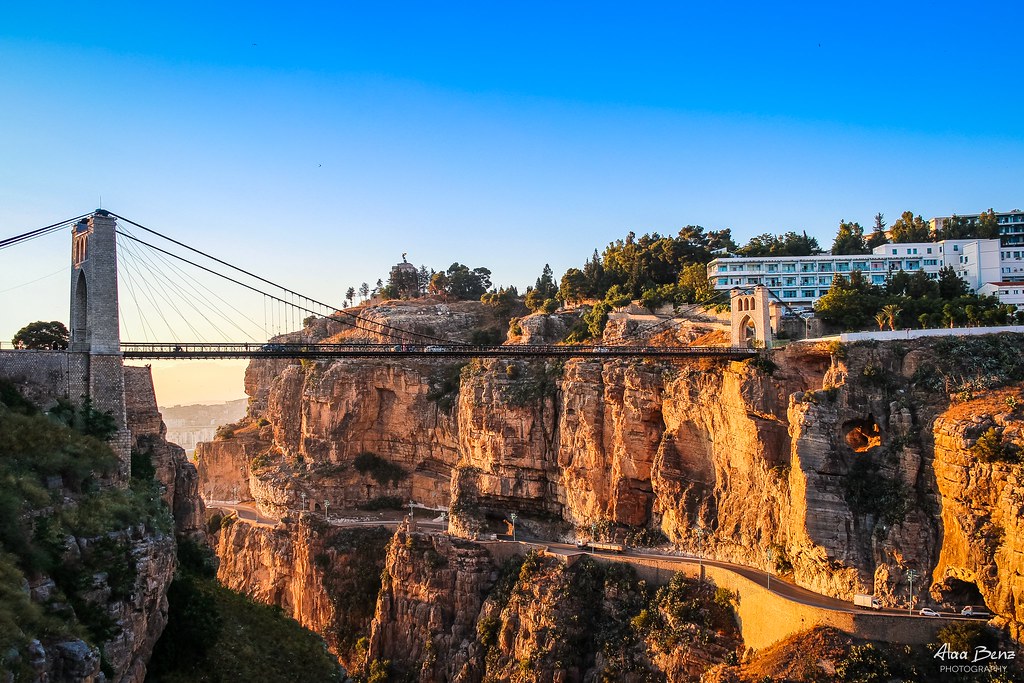
Constantine is famously known as the “City of Bridges,” boasting several impressive structures. Among them is the Sidi Rached Bridge, which held the record for the highest stone bridge in the world at the time of its construction. Equally remarkable is the Sidi M’Cid Bridge, also known as the “Bridge of the Falls,” standing at nearly 175 meters high.
Designed to enchant visitors, the Tourists’ Path is a 2.5 km narrow walkway that winds through the Rhummel gorges. This architectural marvel was constructed by engineer Frédéric Rémès between 1843 and 1895, and offers breathtaking views that showcase Constantine’s natural and man-made beauty.
Religious Heritage
Constantine is home to over a hundred mosques and religious sites, including the Sidi El Kettani Mosque, which also houses a Quranic school, and the Sidi Lakhdar Mosque. The Great Mosque of Constantine is the city’s oldest religious building. The Zawiya Souk-El-Ghozel, dating from the Ottoman era, was converted into a Catholic church during French colonization but reverted to a mosque post-independence. The most imposing religious structure is the Emir Abdelkader Mosque, integrated within Constantine’s University of Islamic Sciences.

The City Museum
Locally known as the “House of Wonders,” the Museum of Constantine was built in 1931. It features three main sections dedicated to fine arts, ethnography, and archaeology. The museum’s archaeological collection showcases relics from the Numidian, Carthaginian, Roman, Christian, and Islamic civilizations. The ethnography section includes displays of traditional weapons, regional attire, and copper utensils.

Mostaganem: Algeria’s Scenic Coastal Gem
Mostaganem, a picturesque port city situated midway between Algeria’s two largest cities, Oran and Algiers, is nestled on the shores of the eponymous gulf. It stands as one of the most beautiful and significant cities in the western and coastal regions of Algeria. Founded in the 11th century by the Almoravids, Mostaganem later became one of the most Hispanic-influenced cities in the Arab Maghreb.
Renowned for its scholars, marabouts, and theologians, Mostaganem holds a special place in the religious and cultural landscape of the Dahra region, where popular belief holds that more than forty-four saints are buried.
Must-See Attractions in Mostaganem
The Casbah Like all Algerian casbahs, Mostaganem’s old city is steeped in history. Despite the dilapidation of some of its ancient quarters, there remains a vibrant soul in the labyrinthine streets, inviting visitors to wander among the weathered and cracked facades.

Mostaland Opened on July 13, 2017, Mostaland Park is a theme park located along the Mediterranean Sea in Mostaganem.

As the largest amusement park in Africa, spanning 57 hectares, Mostaland offers a delightful venue for summer evening strolls and entertainment. The park features a wide array of rides and attractions, as well as a zoo.
Tabana Mosque The ancient Tabana Mosque is one of Mostaganem’s oldest buildings. Constructed in 1340 during the reign of Marinid Sultan Ali Abdallah Ben Abi El Hassen Ben Saïd Merini, it stands proudly in the Tijditt district, serving as a beloved place of worship for the faithful.
For locals, Tabana is an iconic site, its hexagonal minaret making it a distinguished historical monument since May 1979. Adjacent to the old quarter of “Derb,” this centennial jewel enhances the charm and captivating beauty of the ancient city.

Cap Ivi Lighthouse A historical monument, the Cap Ivi Lighthouse is situated on a hill in the commune of Ben Abdelmalek Ramdane, just a short distance from the sea. Built in 1898, the lighthouse stands 123 meters above sea level and is visible up to 120 kilometers on clear days.
In 2015, the iconic Cap Ivi Lighthouse underwent a complete restoration under the guidance of the National Office of Maritime Signaling (ONSM) and the Ministry of Public Works. Since then, it has grown increasingly popular among visitors, who flock for guided tours.

Must-Visit Sites in Annaba

Annaba, one of the most beautiful cities in North Africa, lies near the Algerian-Tunisian border. Bordered by the Aurès Mountains to the south and the Mediterranean Sea to the north, this city is steeped in history and boasts paradisiacal sites that have fascinated visitors for millennia.
Ruins of Hippo Regius (Hippone)
The first traces of human life in the region date back to the Paleolithic era, over 2 million years ago. Historically, the region is linked to the Capsian Proto-Mediterraneans, considered the earliest Berber lineage. Before being named Annaba by the corsair Kheireddine in 1522, Hippo was known as “the Gulf of the King,” dating back to prehistory. It flourished as one of the largest cities in Roman Africa and was a prosperous market.
In the 5th century, under Saint Augustine’s episcopate, Hippo became a center of Christianity. It was subsequently conquered by the Vandals in 431, then by the Byzantines in 533, and finally became Muslim in 705. The archaeological site of Hippone consists of three main parts: the residential quarter with its notable mosaics, the Christian quarter with the basilica, and the large baths and forum.

Basilica of Saint Augustine
The Basilica of Saint Augustine is the city’s church. It is a significant monument not only for the local population but also for the global Christian community. Constructed in the late 19th century with a Roman-Byzantine and Berbero-Moorish architectural style, the basilica sits atop the hill overlooking the city, incorporating Berbero-Roman ruins of Hippo.


Chetaibi
Chetaibi, a tranquil fishing port located 70 km west of Annaba, is nestled in a deep bay. Known for its “golden sand” beaches and calanques teeming with rich aquatic life, Chetaibi is considered one of the most beautiful seaside resorts on Annaba’s western coast. Its famous “West Bay,” blending greenery with the blue sea, is renowned as one of Algeria’s finest.

Forest of Seraïdi
At 900 meters above sea level, Seraïdi overlooks Annaba’s city center, offering panoramic views of Oued Boukrat beach, one of the region’s finest. Beyond its coastline, Annaba boasts forests and mountains, providing cool summer retreats like Mount Seraïdi. Just thirteen kilometers from the city, Mount Seraïdi features lush flora, deep ravines, and canyons that accentuate its grandeur. The El Minzah tourist complex crowns its summit, offering a refreshing escape from the city’s summer heat.


El Louh Beach
Nestled among the picturesque mountains of Seraïdi, El Louh Beach offers a paradisiacal retreat for vacationers. Accessible only by boat from Djenen El Bey Beach, the beach is flanked by ancient rocks sculpted by millennia of wind, resembling the beauty of Greece’s islands.

Algeria: A Future Destination for Influencers
Recently, Algeria has begun to capture the attention of foreign tourists discovering it for the first time. Pleasantly surprised by their experiences, these visitors eagerly share their journeys and highlights from their stays in Algeria.
Several travel enthusiasts, whether seeking new destinations or embracing adventure, are discovering Algeria as an authentic tourist destination rich in culture.
Photographers like Andrew Studer, who likened Tassili N’Ajjer to the planet Mars, and journalist Henry Wismayer, who shared moments from his Algerian journey, have contributed to showcasing the country’s allure. Now, French photographer Eric Lafforgue has unveiled his stunning images captured in Algeria.

Eric Lafforgue discovered his passion for travel to distant lands at the age of 8 during his first trip to Djibouti. In 2006, he began sharing his travel photographs online, a move that led to recognition from major media outlets and prestigious magazines worldwide, including Nat Geo, Lonely Planet, and Geo.
During his recent visit to Algeria, Eric chose to share his photographs, capturing some of the country’s lesser-known wonders. On his website, the French photographer emphasized that Algeria was once considered unsafe and not a typical tourist destination. Today, however, the country offers incredible diversity and is on its way to becoming the next hotspot for influencers, as Eric Lafforgue enthusiastically predicts.
He believes that very soon, influencers will flock to Algeria just as they do to Socotra and other popular destinations, flooding the web with selfies and stories from this captivating country.
Eric Lafforgue’s collection includes numerous images showcasing Algeria’s historical and cultural landmarks, such as the Roman ruins of Djemila, Tassili N’Ajjer, the Casbah, and Ghardaia. These images can be admired on his official website, where he continues to inspire others with the beauty and diversity of Algeria.

Renowned American photographer Andrew Studer has recently released a breathtaking aerial video showcasing the Algerian desert as part of his latest project titled “Space to Roam: The Red Planet.”
Studer, recognized for his collaboration with well-known channels, such as National Geographic and BBC, uploaded a captivating 5-minute and 41-second video on his YouTube channel, offering viewers a glimpse of the stunning landscapes of the Algerian desert.
Captured with a drone camera, the video provides an impressive view of the remarkable scenery found in the cultural hub of “Tassili n’Ajjer,” known as the “Plateau of the Bull” in the Tuareg language.
The video has received praise from American viewers on YouTube, with many expressing their desire to visit the Algerian desert someday to experience its beauty firsthand.
Images by Photographer Andrew Studer
In a significant accolade, National Geographic Channel has named Algeria among the top ten destinations worldwide for 2024, specifically ranking it 8th for offering unparalleled travel experiences. Alongside Kenya’s safari adventures, Algeria’s expansive and enchanting Sahara Desert emerges as a standout choice, placing it as the 2nd best destination in Africa and the foremost in the Arab world.
The accolade comes on the heels of Algeria’s Tassili n’Ajjer National Park captivating specialists and nature enthusiasts alike with its stunning landscapes and ancient rock art.
National Geographic’s endorsement highlights Algeria’s potential as a premier global tourist destination, drawing attention to its natural beauty and cultural heritage. The recognition is expected to ignite a surge in tourism to Algeria’s southern regions, driven by international travelers eager to explore its breathtaking landscapes and historic sites.
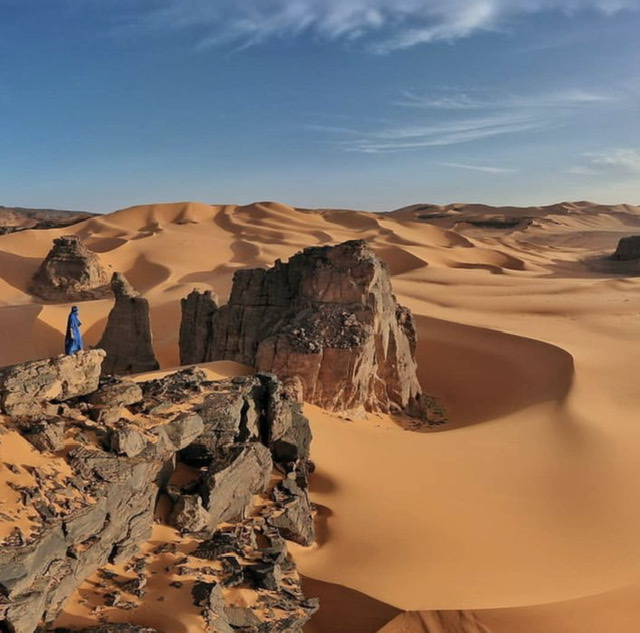
Algeria: The Next Great African Destination, According to National Geographic
American magazine National Geographic shed light on the attractions of Africa’s largest country. In an article penned by Harry Wismayer, the publication dispels misconceptions, affirming that Algeria is “safe and stable.”
The reporter, surprised by his journey, describes Algeria as a land of “hidden wonders.” Along the fertile lands bordering the Mediterranean coast lie historic cities such as Constantine, Oran, and the capital, Algiers. Furthermore, ancient Roman outposts like Djemila and Timgad (both UNESCO World Heritage sites) stand among the best-preserved archaeological destinations in North Africa.
Praising the beauty of Algeria’s south, the journalist recounts his visits to the dunes of Hoggar and Tassili N’Ajjer. “Ancient fortified cities, Roman ruins, and the sands of the Sahara make Africa’s largest country an unknown tourism giant hiding in plain sight.”
Reflecting on Ghardaïa, he describes it as frozen in time, offering glimpses of any century over the past 10. The city’s unique architecture and cultural heritage captivate visitors seeking authentic experiences.
Algerian Hospitality and Culinary Delights: A Journey of Generosity and Flavor
Algeria, known for its warm hospitality and rich culinary heritage, offers visitors a captivating glimpse into its daily life and flavors. From bustling markets to aromatic cafes and lively streets, the essence of Algerian life unfolds through genuine encounters and cultural exchanges.
Algerian Hospitality: A Warm Welcome
At the heart of Algeria’s charm lies its people, renowned for their generous hospitality. Visitors are welcomed with open arms, invited to share in the rhythms of daily life. Whether strolling through vibrant markets teeming with local produce or sipping coffee in fragrant cafes, every interaction with Algerians is marked by sincere smiles and friendly gestures.
The hospitality extends beyond mere courtesy to embody a deep-seated tradition of welcoming guests as honored members of the community. This authentic connection allows visitors to experience Algeria not just as tourists but as participants in its vibrant cultural tapestry.
Algerian Cuisine: A Feast for the Senses
Algerian gastronomy is a culinary journey that tantalizes the taste buds with its diverse flavors and meticulous preparation. Drawing influence from Mediterranean staples and Sahara spices, each dish offers a unique culinary adventure.
1. Couscous: Symbol of Algerian Cuisine
Couscous, often referred to as Algeria’s national dish, embodies the country’s culinary identity. This versatile semolina staple is meticulously steamed and served with a variety of savory accompaniments such as tender meats, flavorful vegetables, and aromatic sauces. It symbolizes not only a staple food but also a communal experience, often shared during festive gatherings and family celebrations.

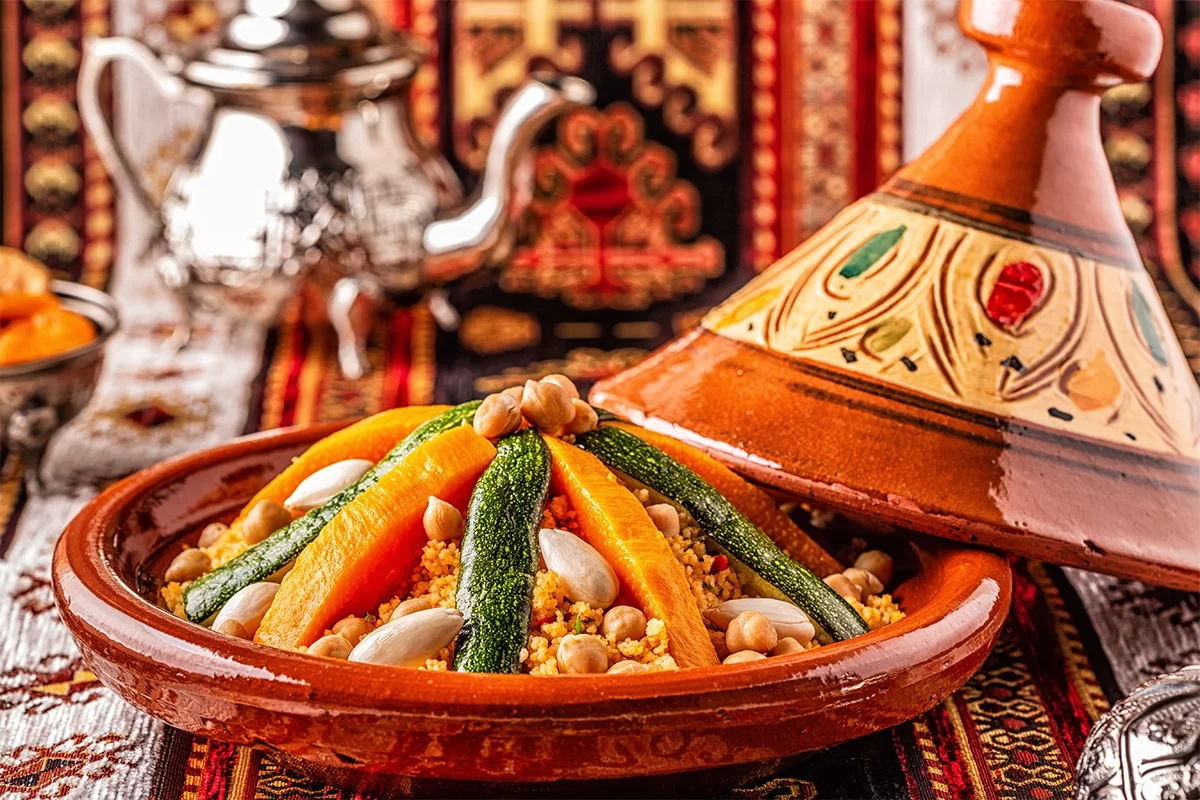
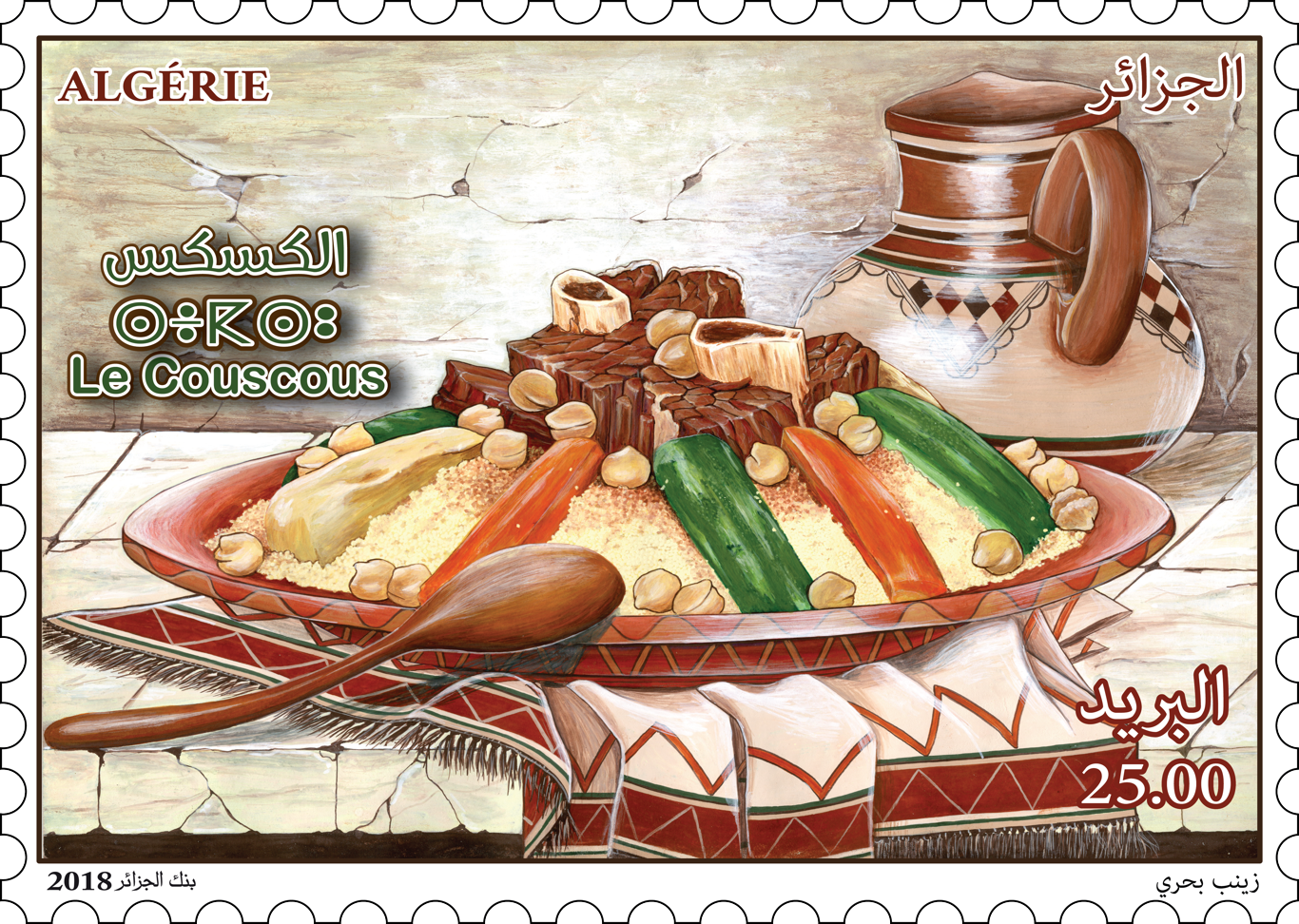
2. Tajines: Fusion of Flavors
Algerian tajines showcase a fusion of spices and ingredients, reflecting the country’s diverse cultural influences. Slow-cooked to perfection, these savory stews feature tender meats or fish seasoned with a blend of herbs, spices, and dried fruits. Each region of Algeria offers its own interpretation of this beloved dish, adding to its cultural significance and culinary appeal.

3. Grilled Delights: Celebrating Tradition
Grilled meats and seafood hold a special place in Algerian cuisine, celebrated for their robust flavors and communal significance. Marinated in traditional herb blends and grilled over open flames, these dishes evoke a sense of tradition and festivity, often enjoyed during social gatherings and national holidays.
4. Decadent Pastries: Sweet Endings
Algerian pastries, such as baklavas and makrouds, are renowned for their delicate sweetness and intricate preparation. Made from layers of phyllo dough, nuts, and honey, these treats showcase Algerian craftsmanship and hospitality, often served with mint tea during welcoming ceremonies and festive occasions.

Culinary Heritage and International Recognition
Algeria’s culinary heritage has gained international acclaim for its depth of flavors and cultural significance. Influenced by Berber, Arab, Ottoman, and French traditions, Algerian cuisine continues to evolve while preserving its authentic roots. The emphasis on fresh, locally sourced ingredients and traditional cooking methods ensures that each dish offers a true taste of Algeria’s diverse landscapes and cultural tapestry.
Conclusion: Algeria Awaits Your Discovery
With its diverse offerings, from the breathtaking Sahara and inviting Mediterranean beaches to its rich cultural heritage and soothing thermal springs, Algeria is a destination that promises something for every traveler. The nation’s commitment to enhancing its tourism infrastructure and preserving its natural and cultural treasures ensures a memorable and enriching experience for all who visit. Come and explore Algeria—a land of endless wonders and timeless beauty.
Experience the breathtaking beauty of Algeria through this stunning video showcasing its scenic landscapes and vibrant culture. From the majestic Sahara Desert to the lush coastal regions, each frame captures the essence of Algeria’s diverse natural wonders. Join us on a visual journey through this magnificent North African country.
Video BY: Scenic Relaxation
Discover a plethora of destinations through our tourism series, featuring captivating titles that promise to ignite your wanderlust. From hidden gems to iconic landmarks, we’ve covered diverse topics to offer a rich tapestry of travel experiences. Stay tuned for more exciting articles as we continue to unveil new destinations and delve deeper into the wonders of the world.
(1):
Sneak Peek into Our Related Articles:
Tourism in Algeria (1)- Traditional Sand Bath Therapy: A Centuries-Old Healing Ritual Boosting Saharan Tourism
Tourism in Algeria (2)-Chréa National Park: A Snowy Wonderland in Algeria
https://www.dzair-tube.dz/en/tourism-in-algeria-2-chrea-national-park-a-snowy-wonderland-in-algeria/
Tourism in Algeria (3): Foreign Tourists Marvel at the Majestic Tipasa’s Tourist Complex of the Golden Horn, a Gem in Algerian Tourism
Tourism in Algeria (4): Oran’s Mediterranean Village Welcomes Tourists for Summer Holidays
Tourism in Algeria (5)- Algeria’s Rich Cultural Heritage: From Prehistoric Rock Art to Contemporary Art Movements – Photos
Links to the Cultural Series:
Exploring Ramadan Traditions in Algeria | Dzair Tube Ramadan Series (01)
https://www.dzair-tube.dz/en/exploring-ramadan-traditions-in-algeria-dzair-tube-ramadan-series-01/
Exploring Ramadan Traditions in Algeria’s Casbah | Dzair Tube Ramadan Series (02)
Al-Bouqala Poetry in Algerian Women’s Ramadan Gatherings | Dzair Tube Ramadan Series (03)
Preserving Social Cohesion: Algerians Uphold Tradition of “Laouziaa” Ahead of Ramadan | Dzair Tube Ramadan Series (04)
Ramadan in Algeria: No One Goes Hungry with Guaranteed Iftar for All | Dzair Tube Ramadan Series (05)
Children’s First Fasting Experience in Algeria: Celebrations and Traditions | Dzair Tube Ramadan Series (07)
Ramadan Traditions in Southern Algeria | Dzair Tube Ramadan Series (08)
https://www.dzair-tube.dz/en/ramadan-traditions-in-southern-algeria-dzair-tube-ramadan-series-08/
Culture in Algeria: Cultural Traditions, Beliefs Surrounding Eid Al-Adha in Algeria – Special Dossier
https://www.dzair-tube.dz/en/25310-2/
Mawlid Ennabawi Celebrations in Algeria: A Deep Dive into Traditions, Rituals, Festivities, and Culinary Delights
Discover Algerian Cultural Riches 1: Yennayer Celebrations in M’zab
https://www.dzair-tube.dz/en/discover-algerian-cultural-riches-1-yennayer-celebrations-in-mzab/

About Dzair Tube Media Group
Dzair Tube has firmly established itself as a prominent player among Algerian digital news sites, offering a diverse and enriching content experience. The platform, available in Arabic, French, and English editions, captures the attention of a wide-ranging audience, amassing over half a million daily clicks.
A testament to its commitment to excellence, Dzair Tube received the prestigious President of the Republic’s Award for Professional Journalist in the Electronic Press category on October 22, 2022. This recognition underscores the platform’s unwavering dedication to upholding the highest standards of journalism.
With a significant online presence, Dzair Tube boasts 350,000 subscribers on YouTube, over five million followers on various Facebook pages, and 450,000 subscribers on Instagram. Its digital channel has become a hub for diverse programming, covering news, sports, entertainment, culture, and religion, catering to a broad spectrum of audience preferences.
Equipped with state-of-the-art studios and advanced technology, Dzair Tube’s digital channel has garnered substantial viewership for its varied programs. Hosting interactive discussions with influential figures across different domains, the platform actively fosters public discourse and engagement. Beyond news coverage, Dzair Tube extends its commitment to the production of marketing documentaries, short TV commercials, and high-viewership programs.
The success of the print edition of Dzair Tube’s sports newspaper, “Dzair Sport,” further highlights the platform’s impact, with over 50,000 daily downloads from the official Dzair Tube website.
Honored with the Media Leadership Award from the Minister of Communication, Mohamed Laâgab, Dzair Tube continues to shape the landscape of Algerian digital news, maintaining a position of influence and impact in the media industry.




